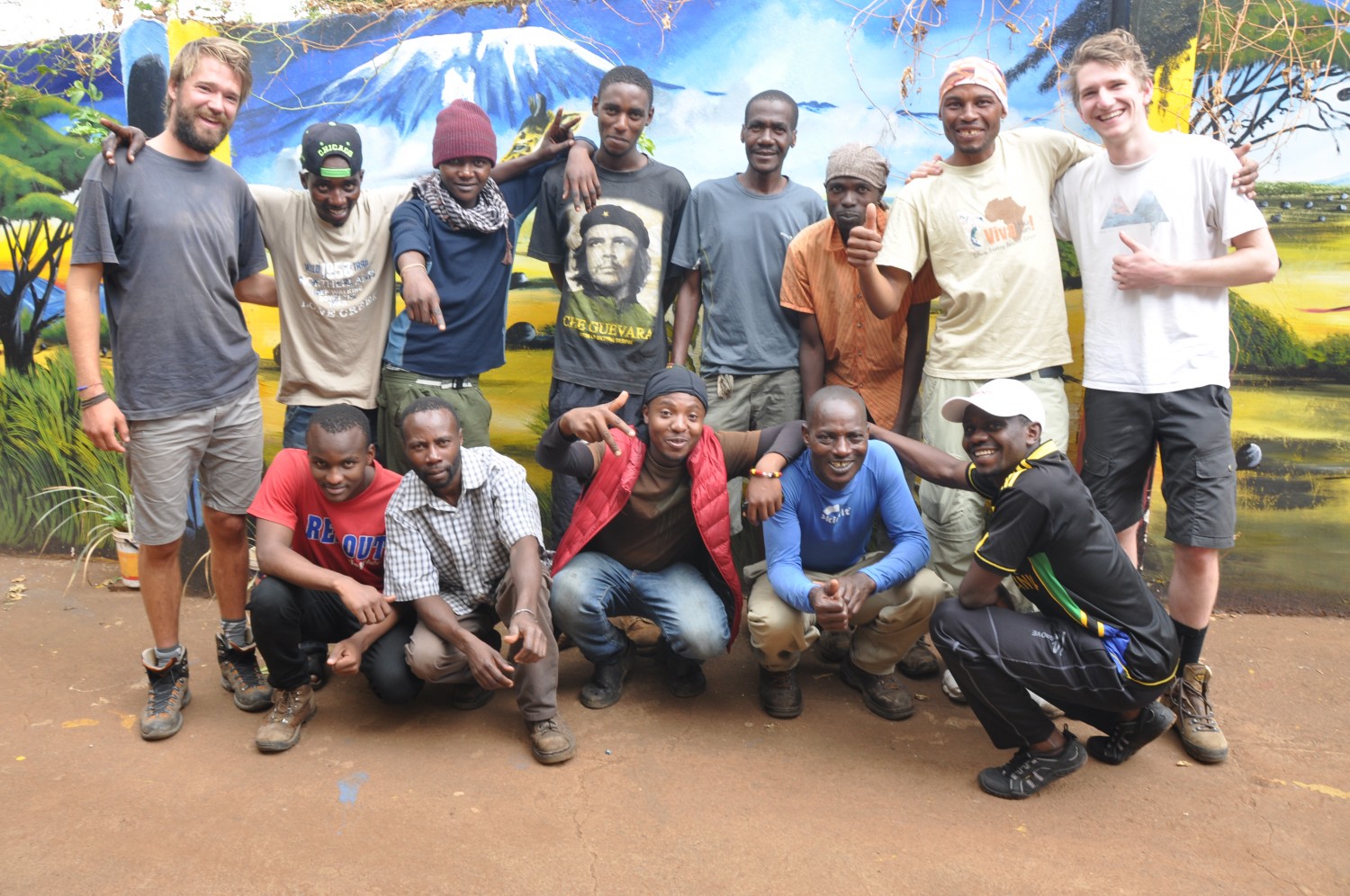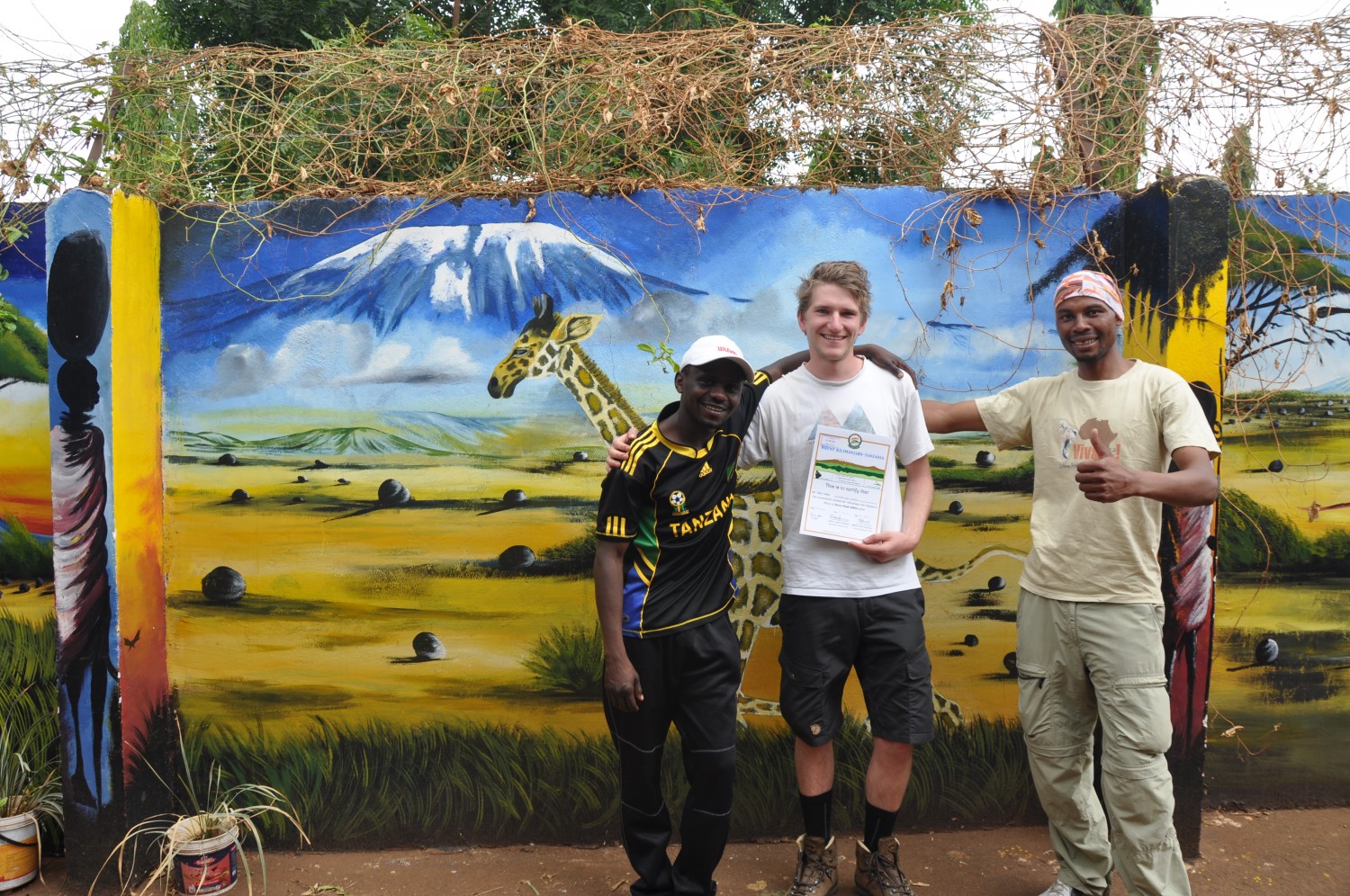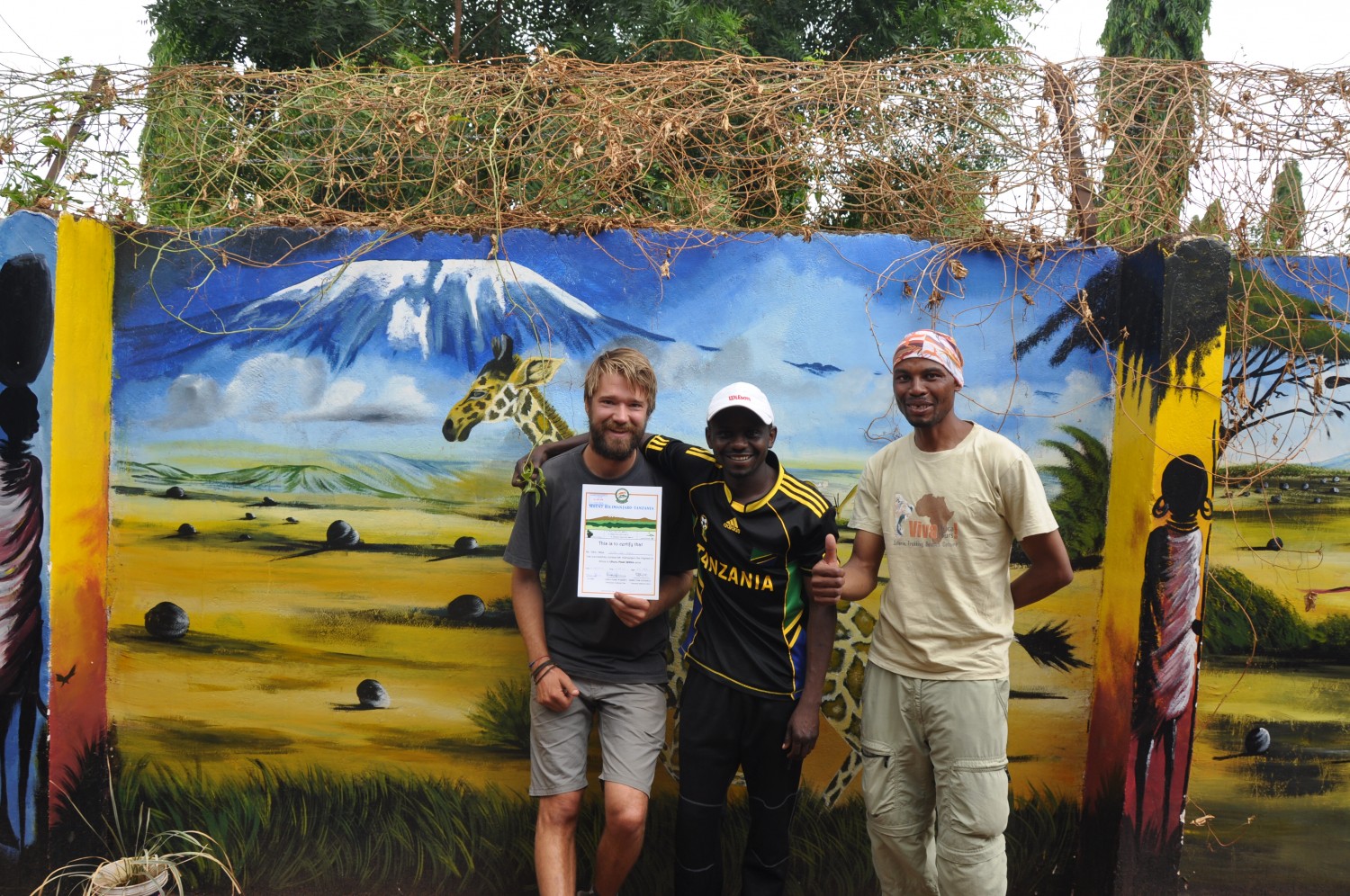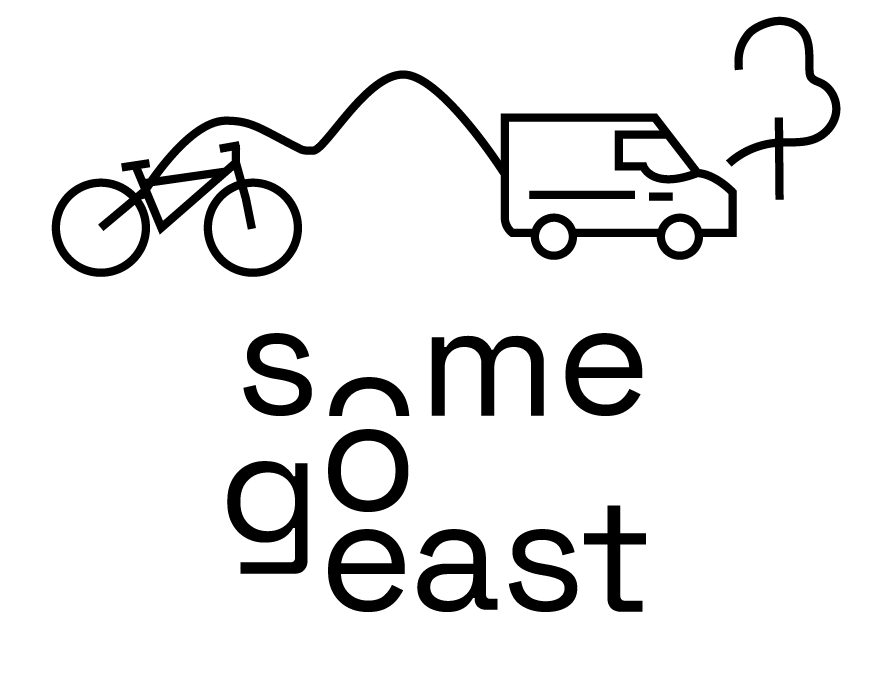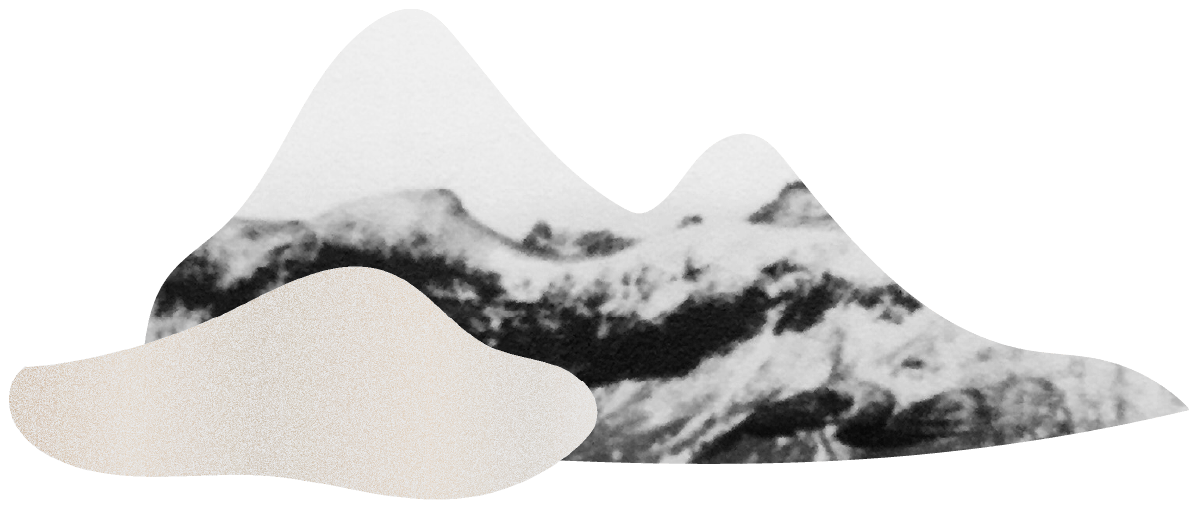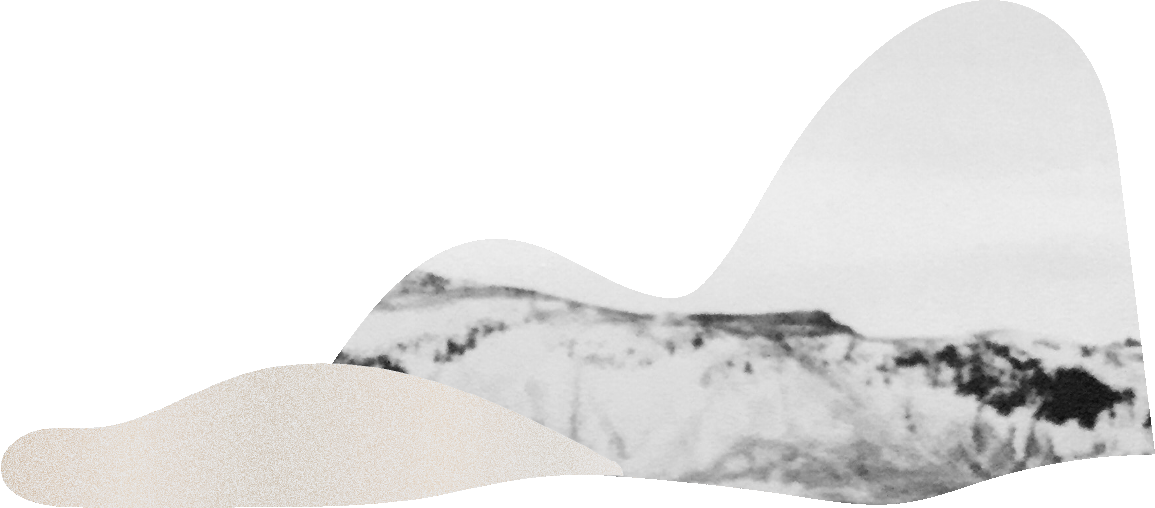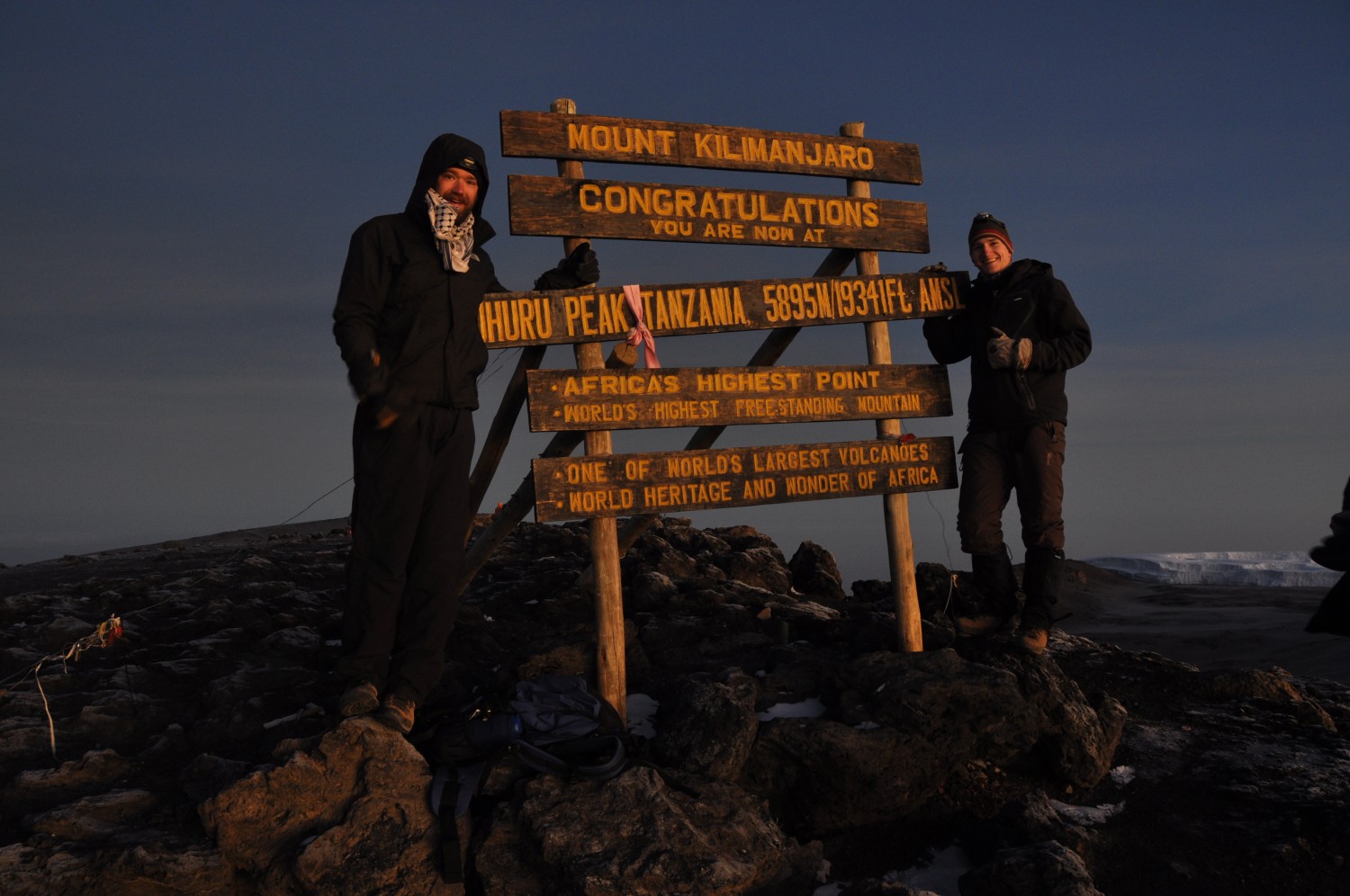
Since I'm so much behind on my stories, and this has been a special week for me, I'll skip a few (actually many) stories and write about my hike on Mount Kilimanjaro!
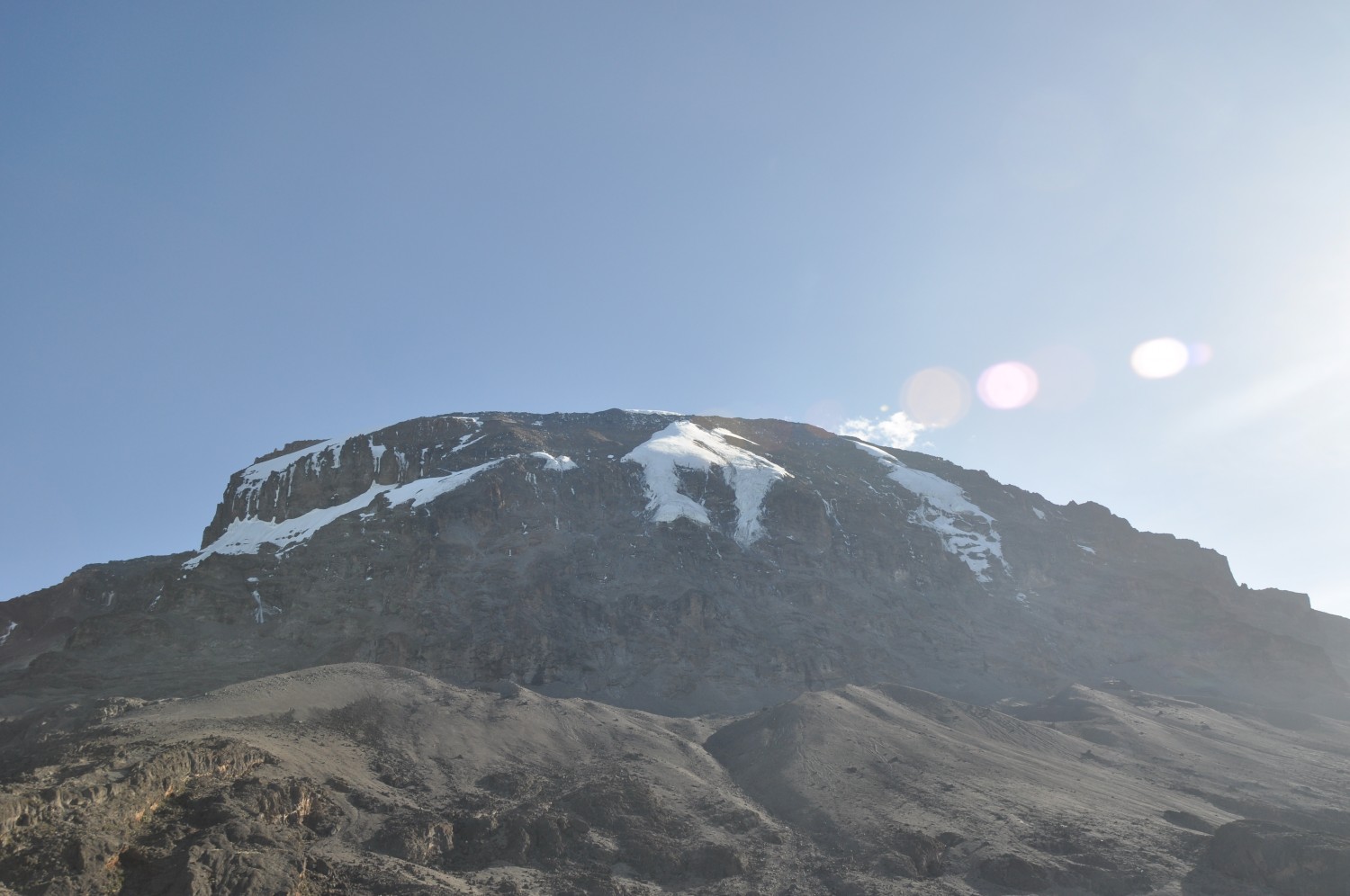
I was again very lucky to have a visitor, after my parents' visit in Ethiopia: my youngest brother Victor came from Belgium on the 26th of March to join me for the hike. He had his break from University for Easter, so we could climb Kilimanjaro together.
Mount Kilimanjaro is the highest mountain of Africa, at 5895 meter on the Uhuru Peak. The name, meaning "freedom", was given by the first president of Tanzania after it's formation in 1964. Climbing the mountain does not require any special equipment, so it is a popular destination for people wanting to climb one of the Seven Summits, the collection of highest mountains of each of the seven continents.
Day 1: Moshi to Machame gate (1800 m) to Machame Camp (3000 m)
We set off on Sunday the 27th for a six days, five nights hike on the popular Machame route. This route is the most frequented camping route and is the most popular route after the Marangu route, where you sleep in huts. On this six day trek there is one acclimatisation day to minimise the risk of getting altitude sickness.
On the way to the Machame gate (at 1800 m) the weather was super! The skies were clear in the morning, so we had a good view of the mountain from the car. We knew what was waiting for us! The picture is less clear...
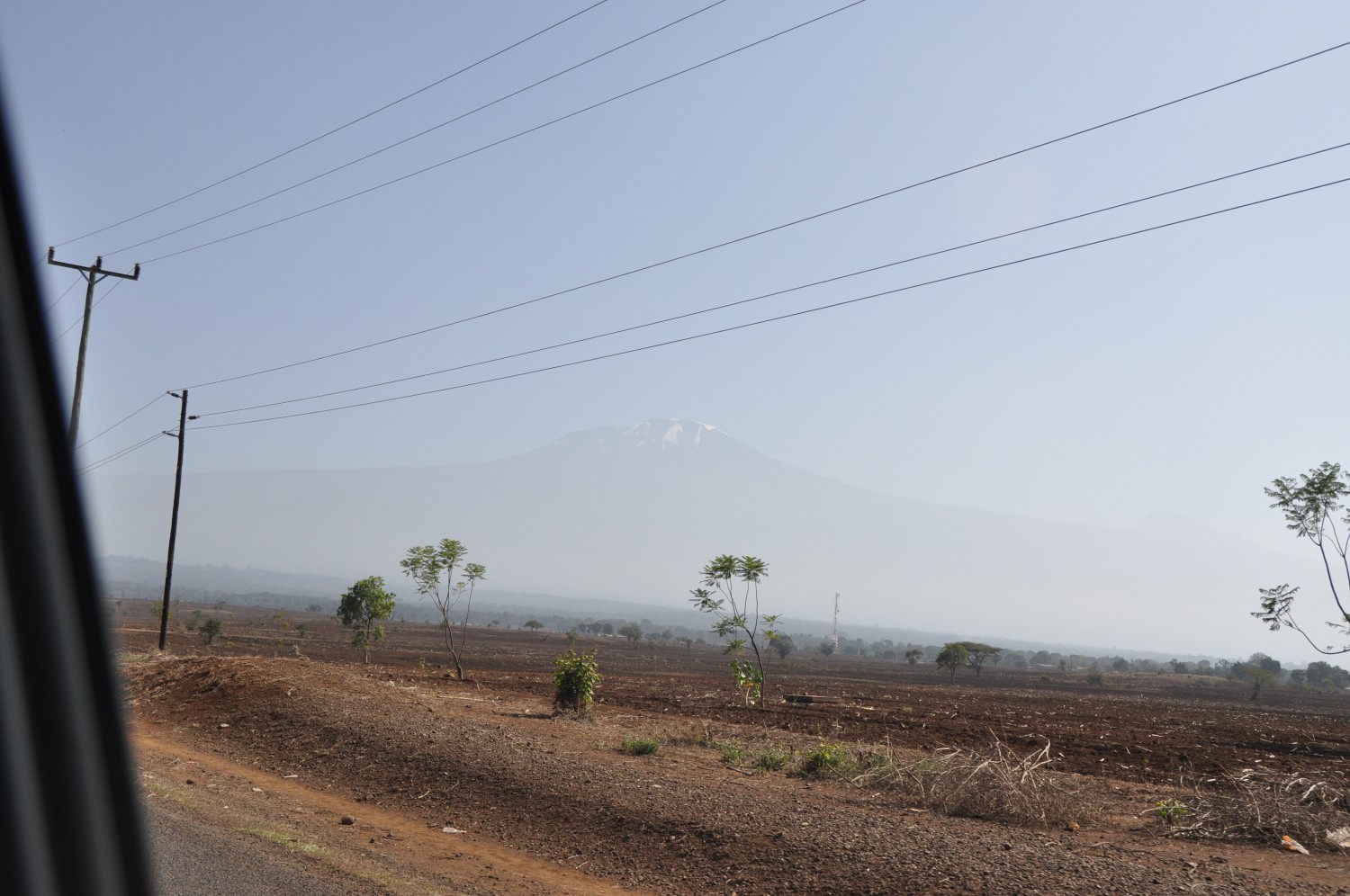
While waiting at the gate for our team consisting of 2 guides, 1 cook and 8 porters to get all the documents in order and distribute the tents, food and backpacks, a monkey, very sneakily, stole some of the other hikers' lunch for that day.
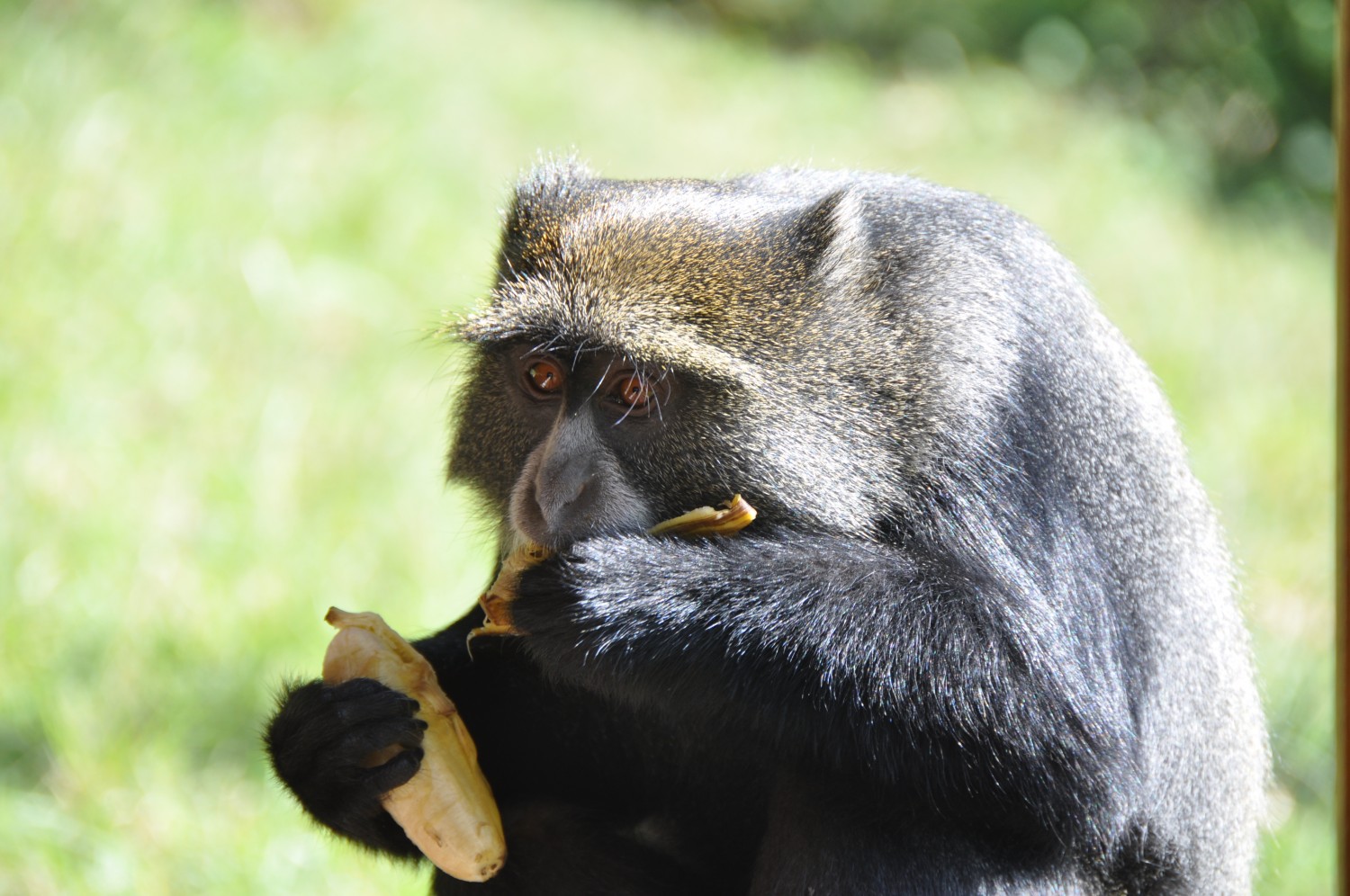
The sign at Machame gate, with the relevant camp sites and landmarks on our route towards the summit. We had a 40 km and 32 hour long hike in front of us.
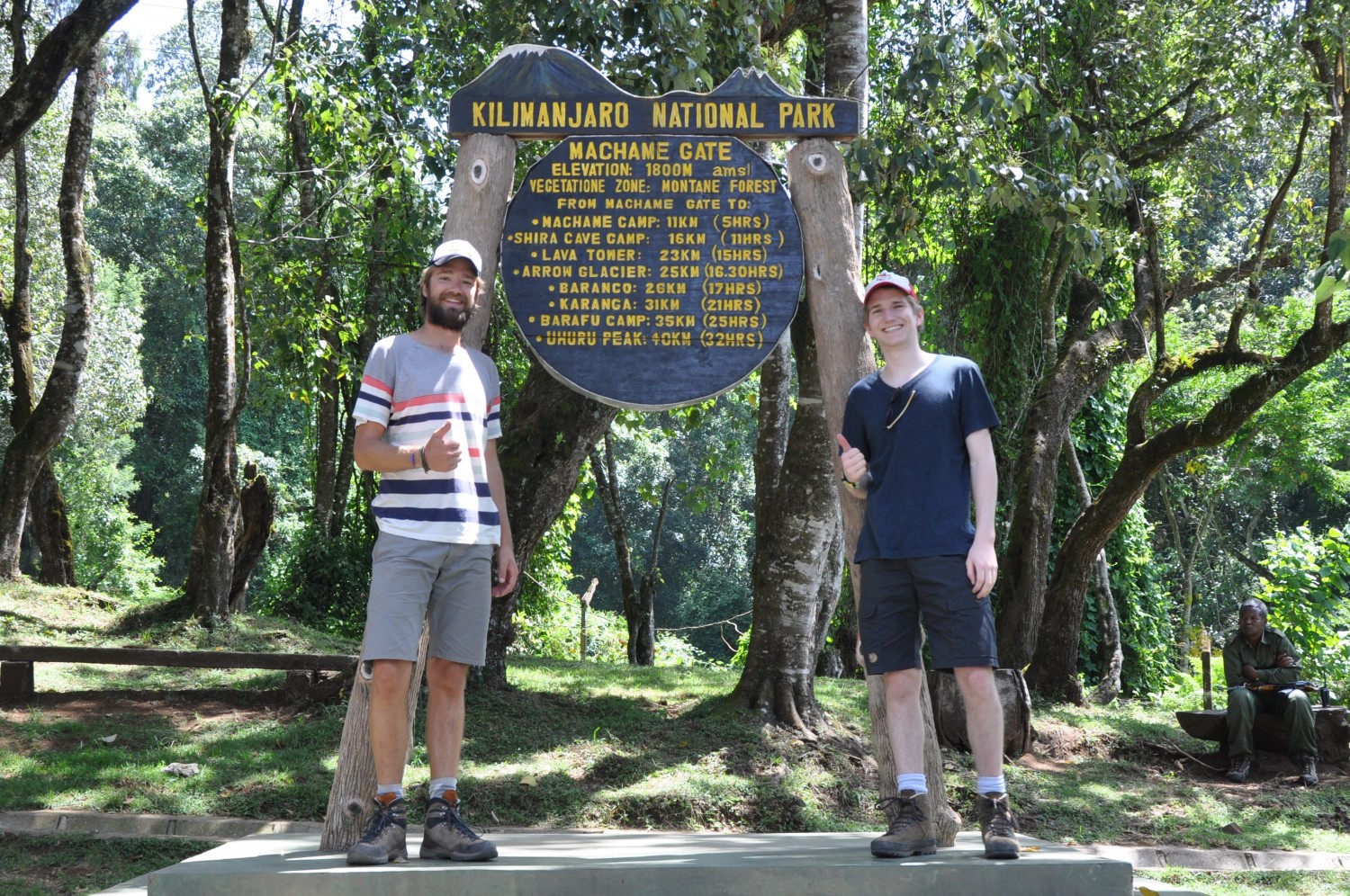
On the first day, the hike took us through the forest until the first camp site at 3000 m. By the time we arrived, the clouds and rain had come. March was coming to an end, which meant the rain season was about to start. There was a chance to encounter a lot of rain and maybe snow on the way.
Eventually we had no snow but during the day the weather changed like clockwork: the sky cleared during the night, so we always woke up to a sunny morning. By midday the clouds had appeared and by 1 pm, it always started raining.
Victor listening carefully to one of our guides.
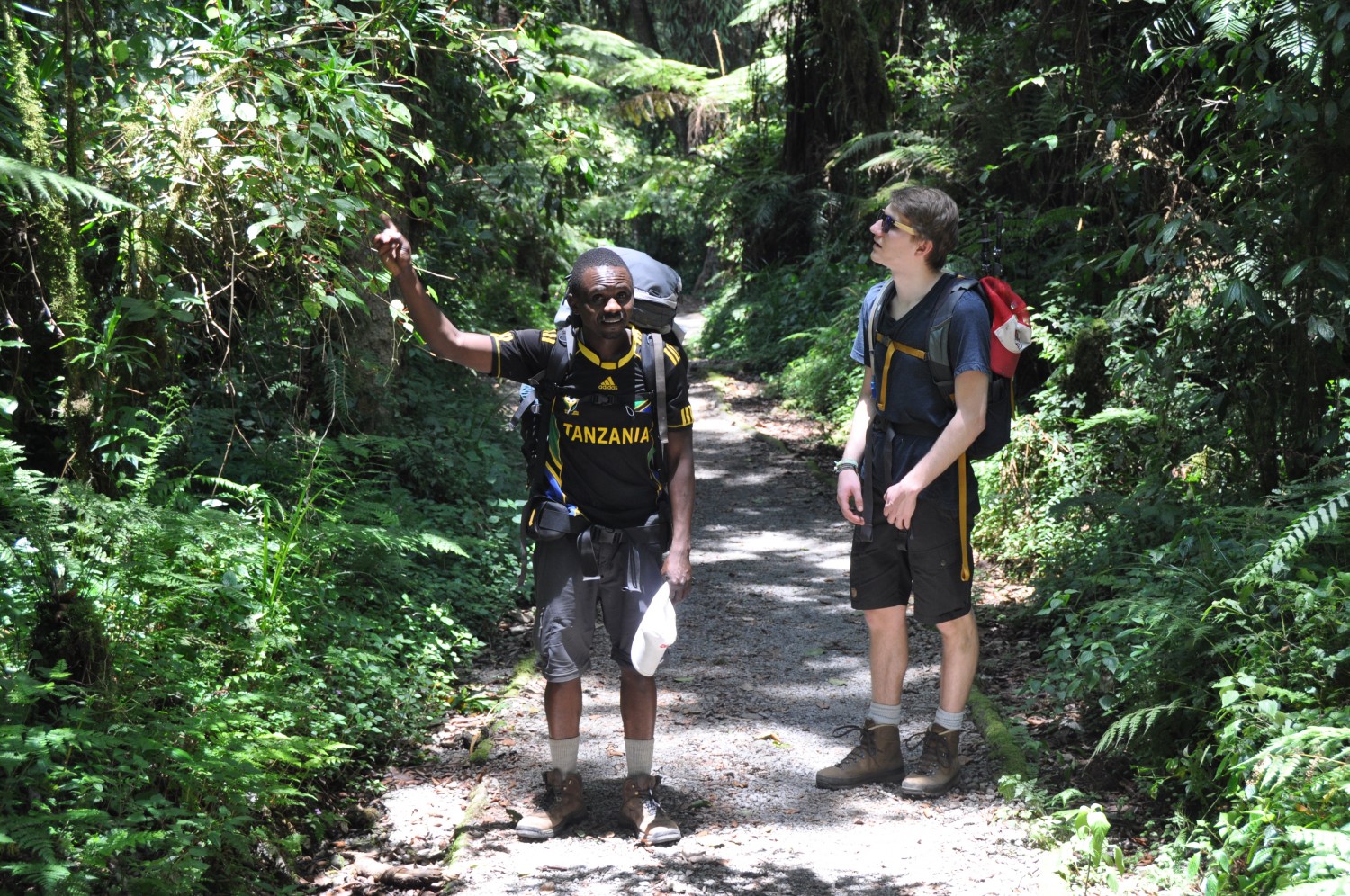
Our arrival at Machame Camp at 3000 m.
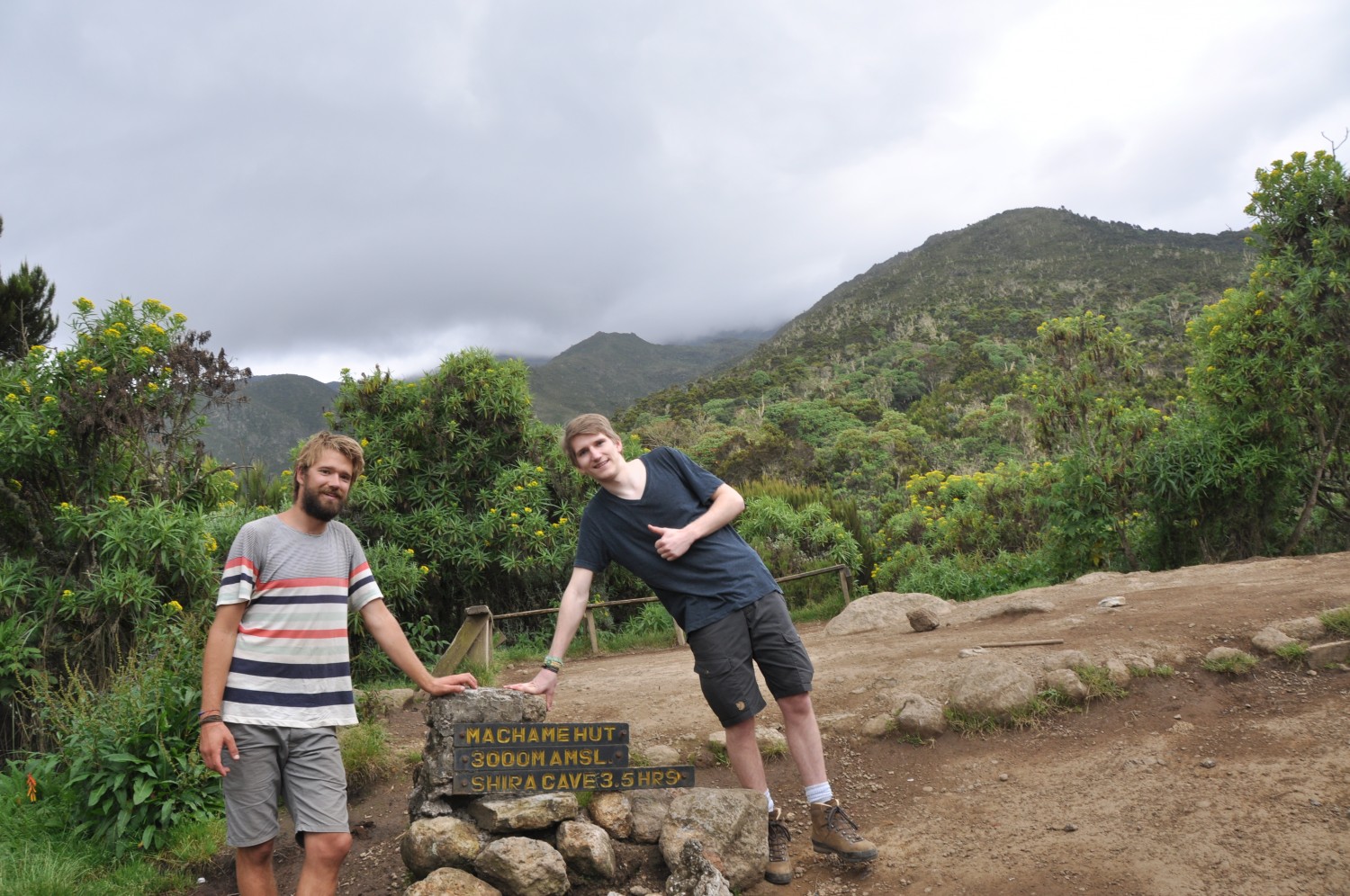
Our mess tent where we had our pancakes, rice, fruits, pasta, eggs, etc..., and, of course, loads of tea to keep us hydrated to battle altitude sickness!
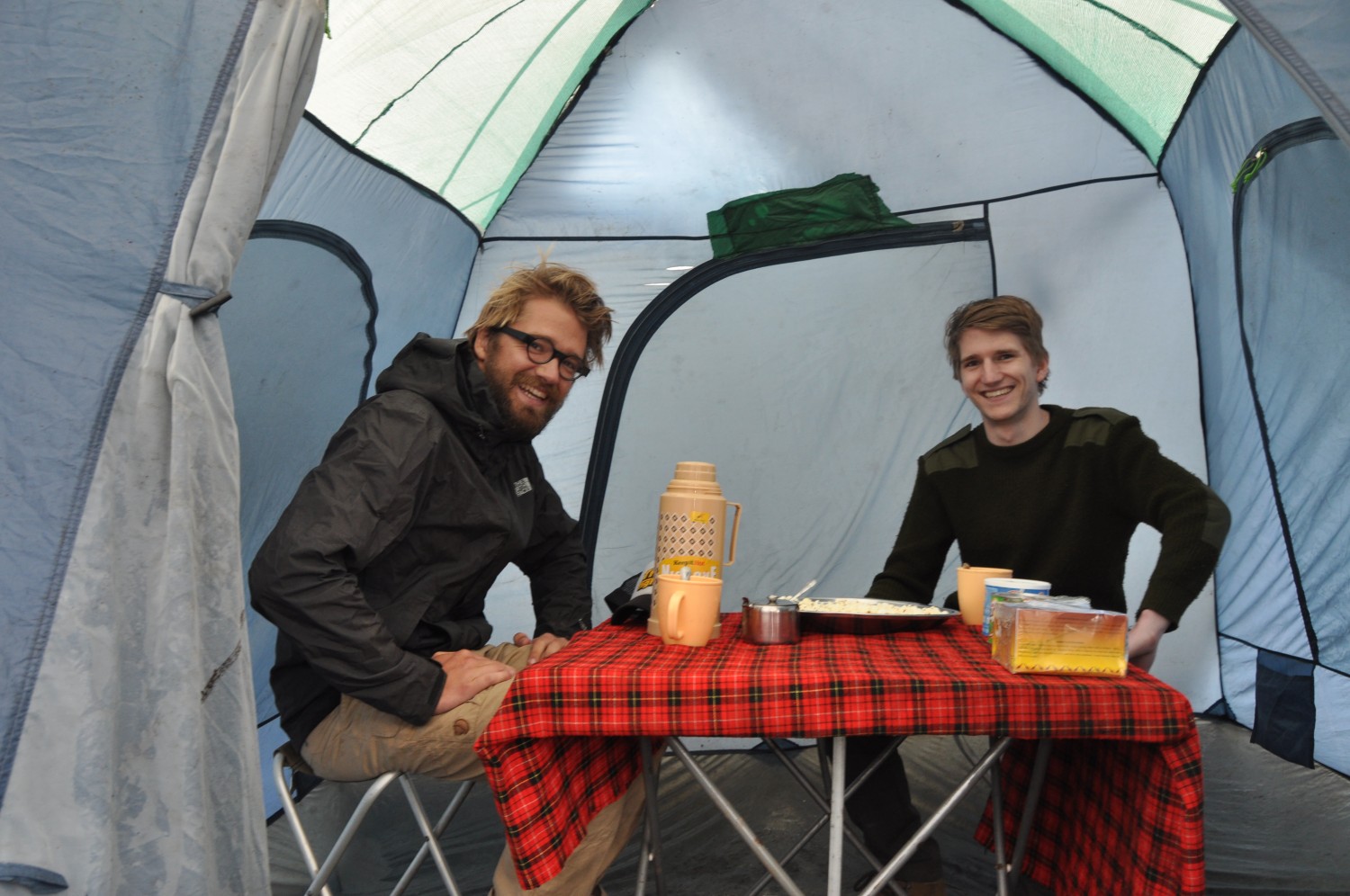
A view on the permanently (for now!) snow capped Kibo Peak from Machame camp.
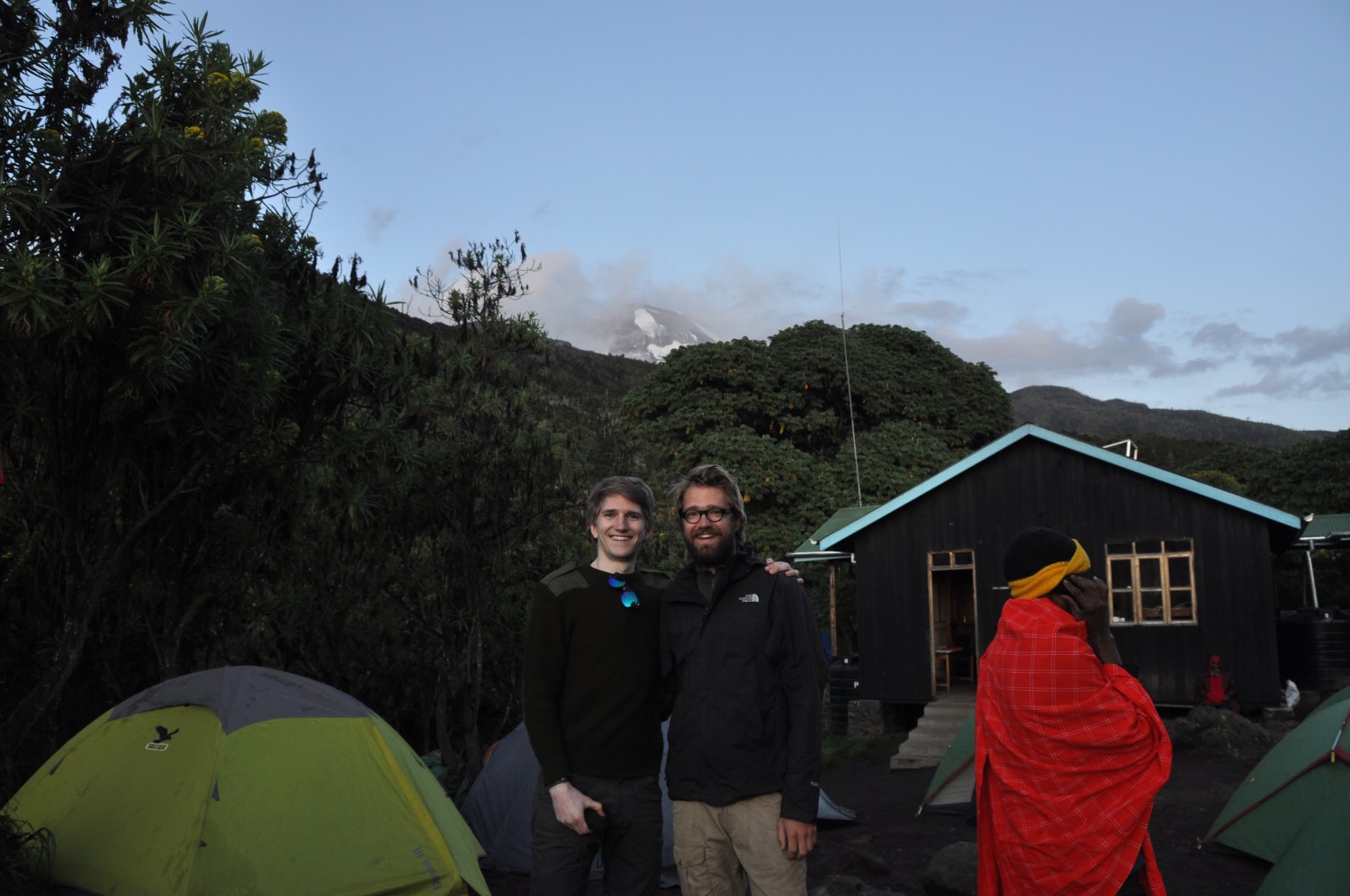
The start of the rain season also meant that we were climbing Kilimanjaro during the low season. We were accompanied by only five other groups, totaling to about 30 other climbers (excluding their accompanying teams). Both of us wondered constantly how the experience must be during high season when there's hundreds of people climbing at the same time, leading to extremely full camp sites, traffic jams on the hiking paths and to wait to take a picture of the sign at the summit.,. We did not mind the little rain we had every day!
Day 2: Machame Camp (3000 m) to Shira Camp (3900 m)
The second day we walked up to 3900 meter to Shira Camp. A huge open campsite, with a good view on the mountain. We started again in the forest but soon left it for a more open space. The second vegetation zone was more rocky and had more bushes than trees. The higher we climbed, the smaller the flora became..
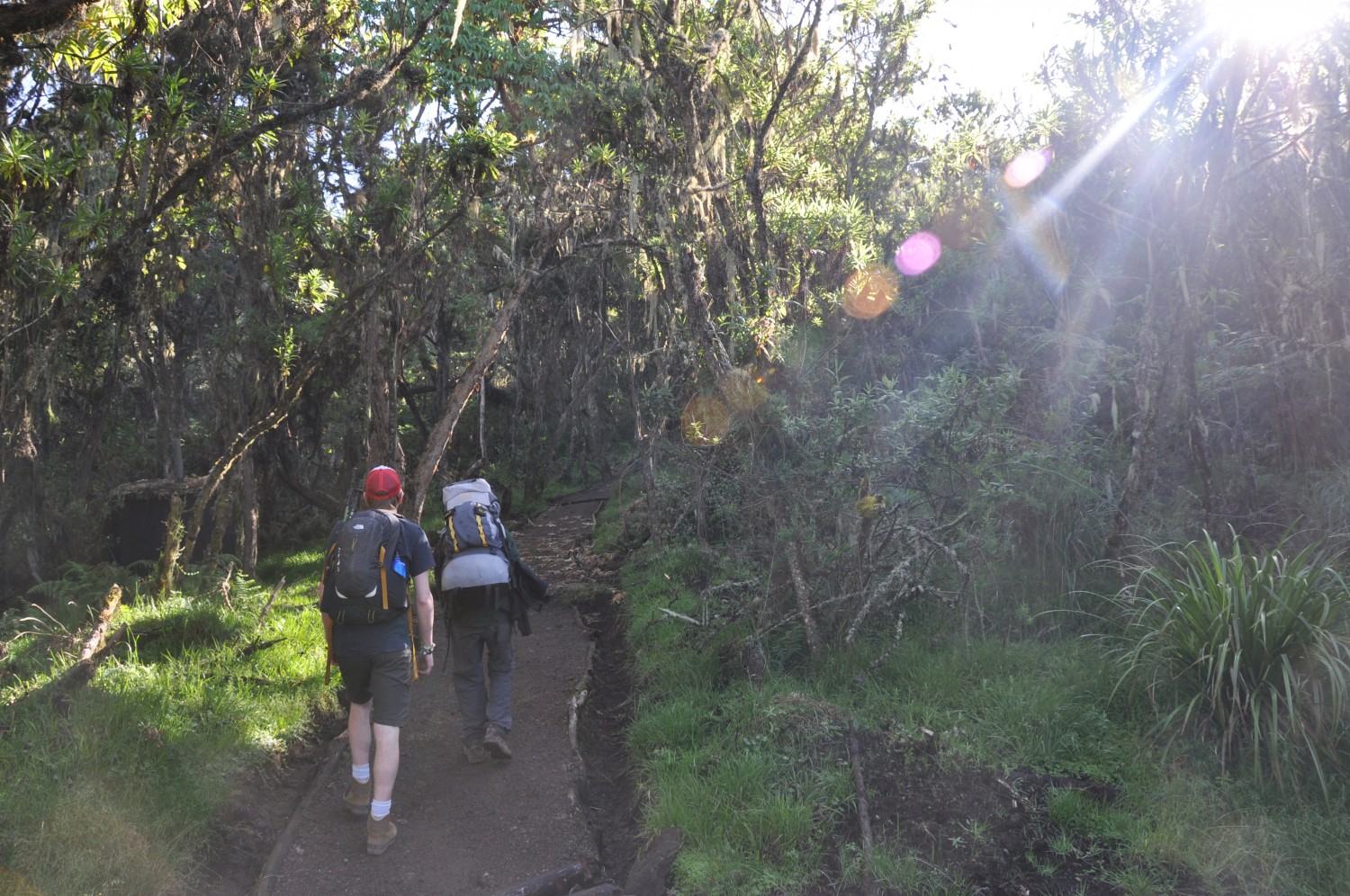
Victor, being excited to see Kibo Peak:
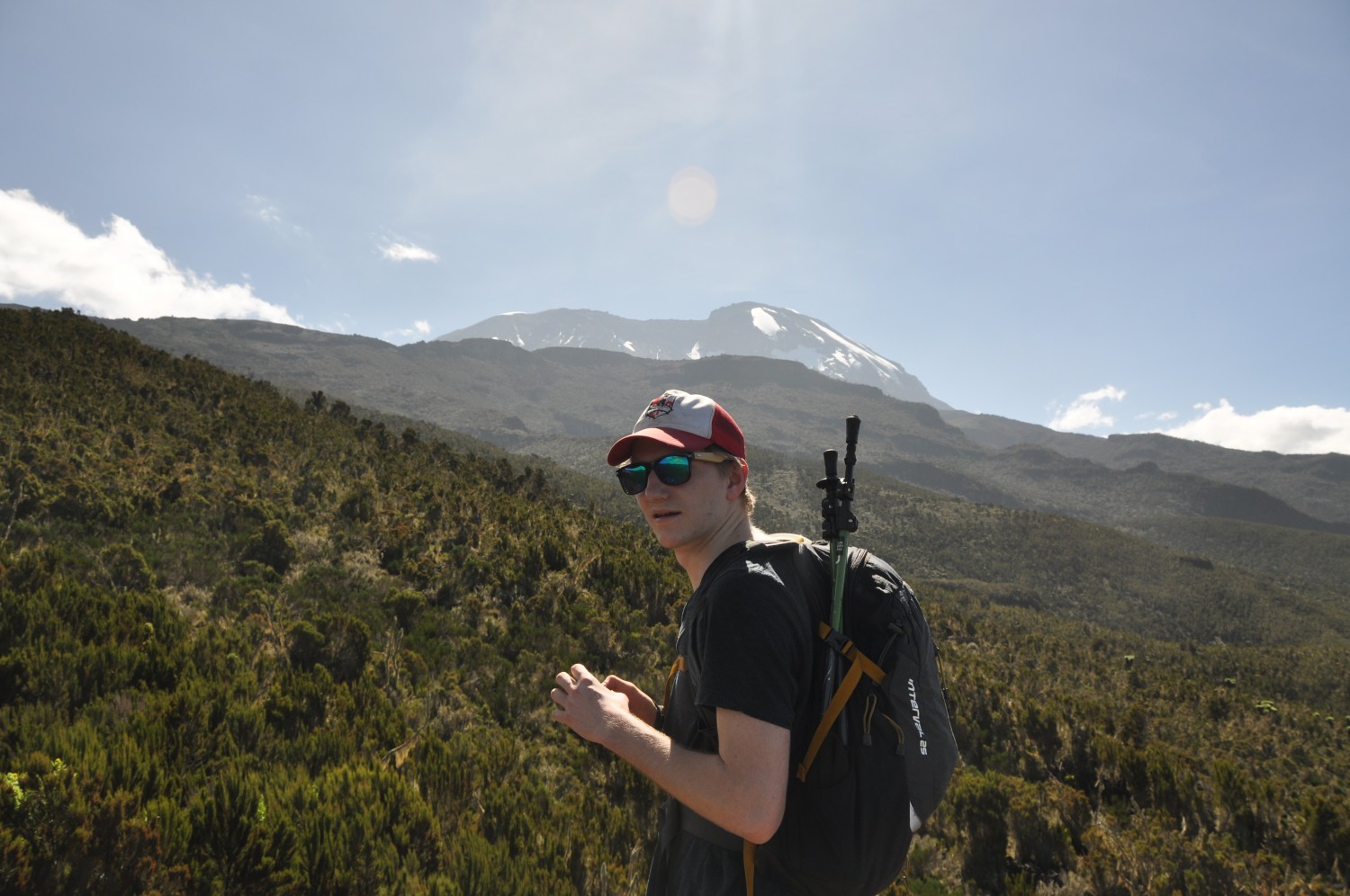
The huge Shira Camp, covered in fog:
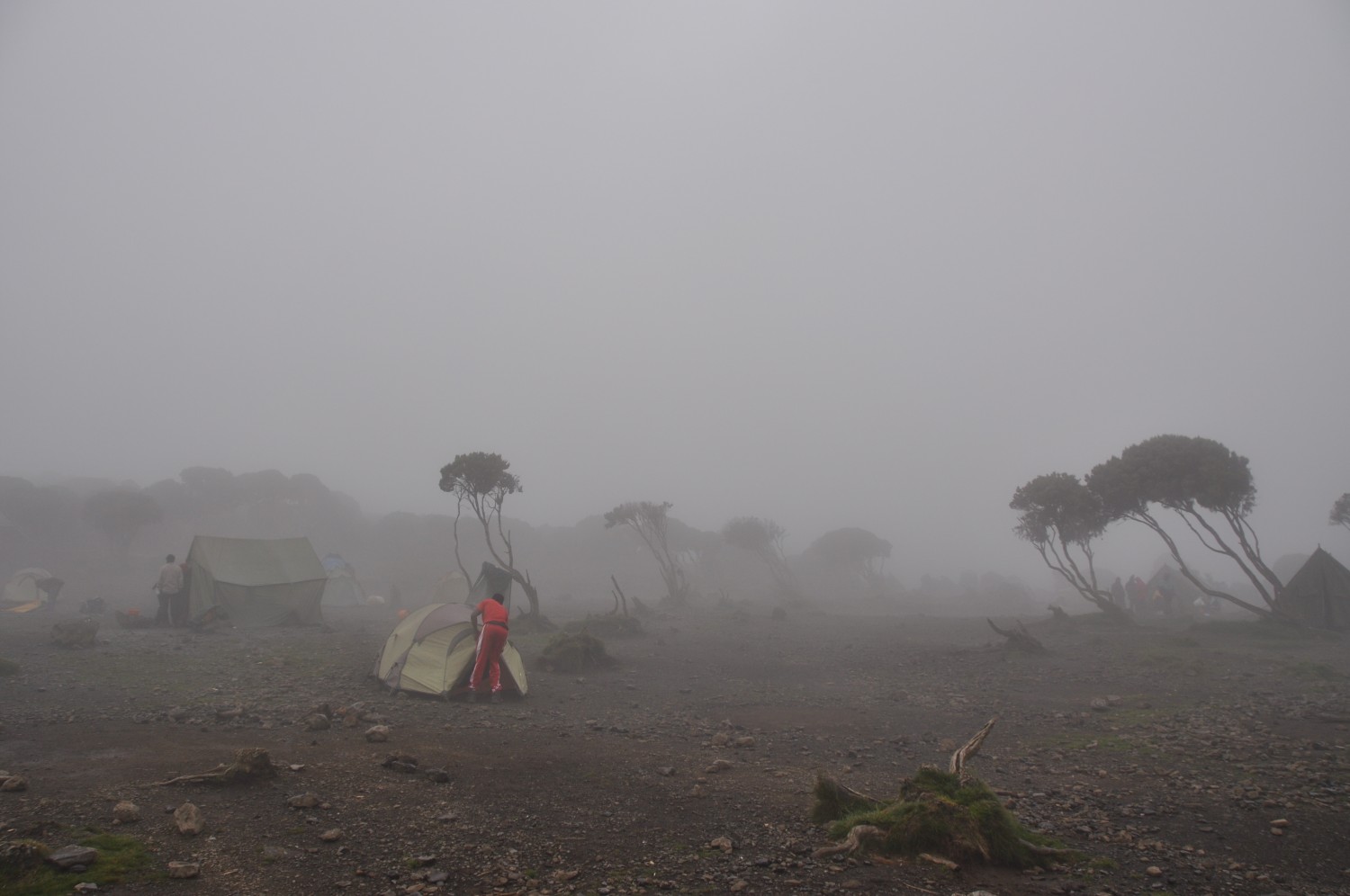
Victor and the other mountain guide:
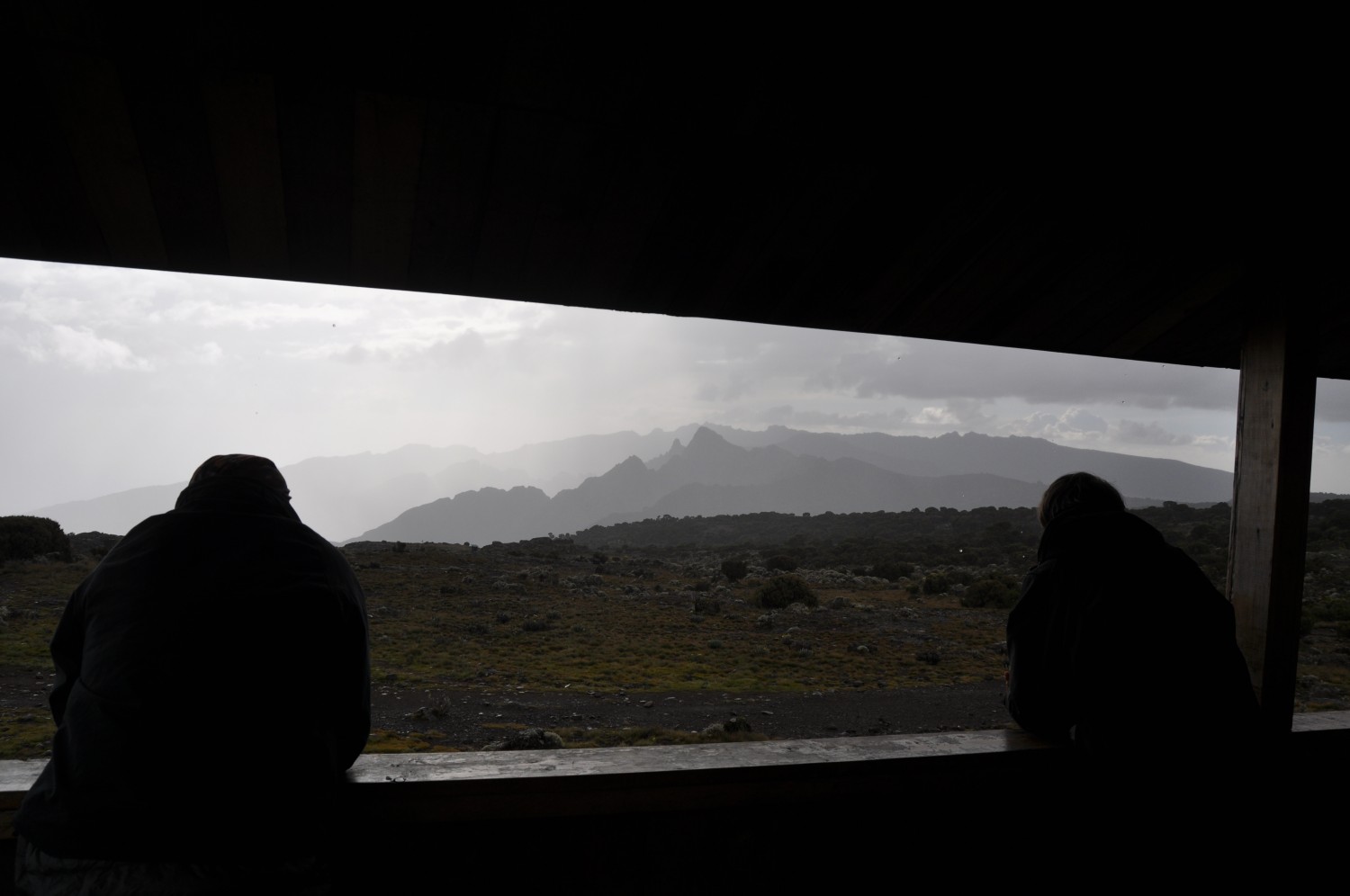
View over the Shira volcano:
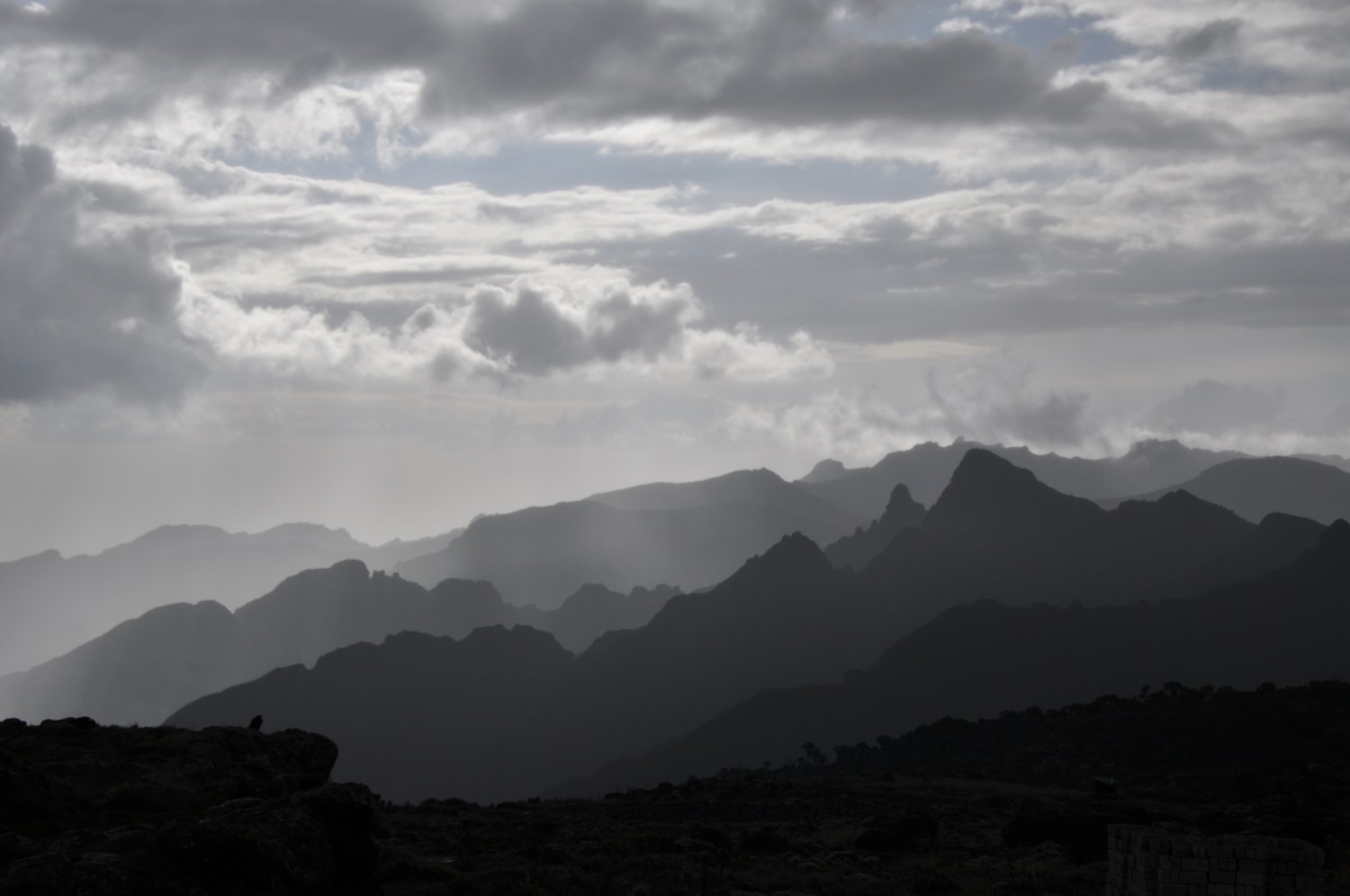
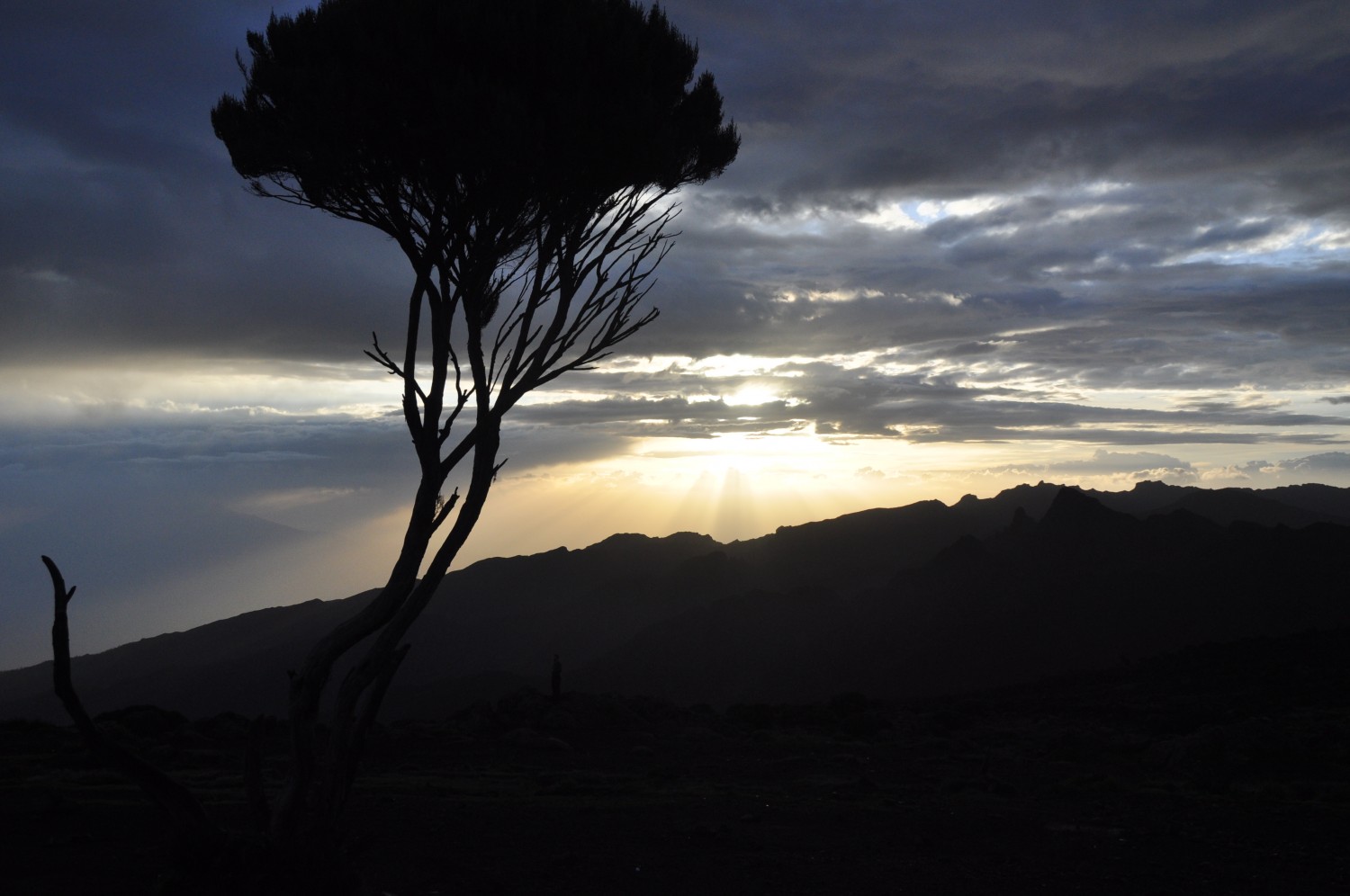
Shira Camp and the complete Kibo Peak at sunrise:
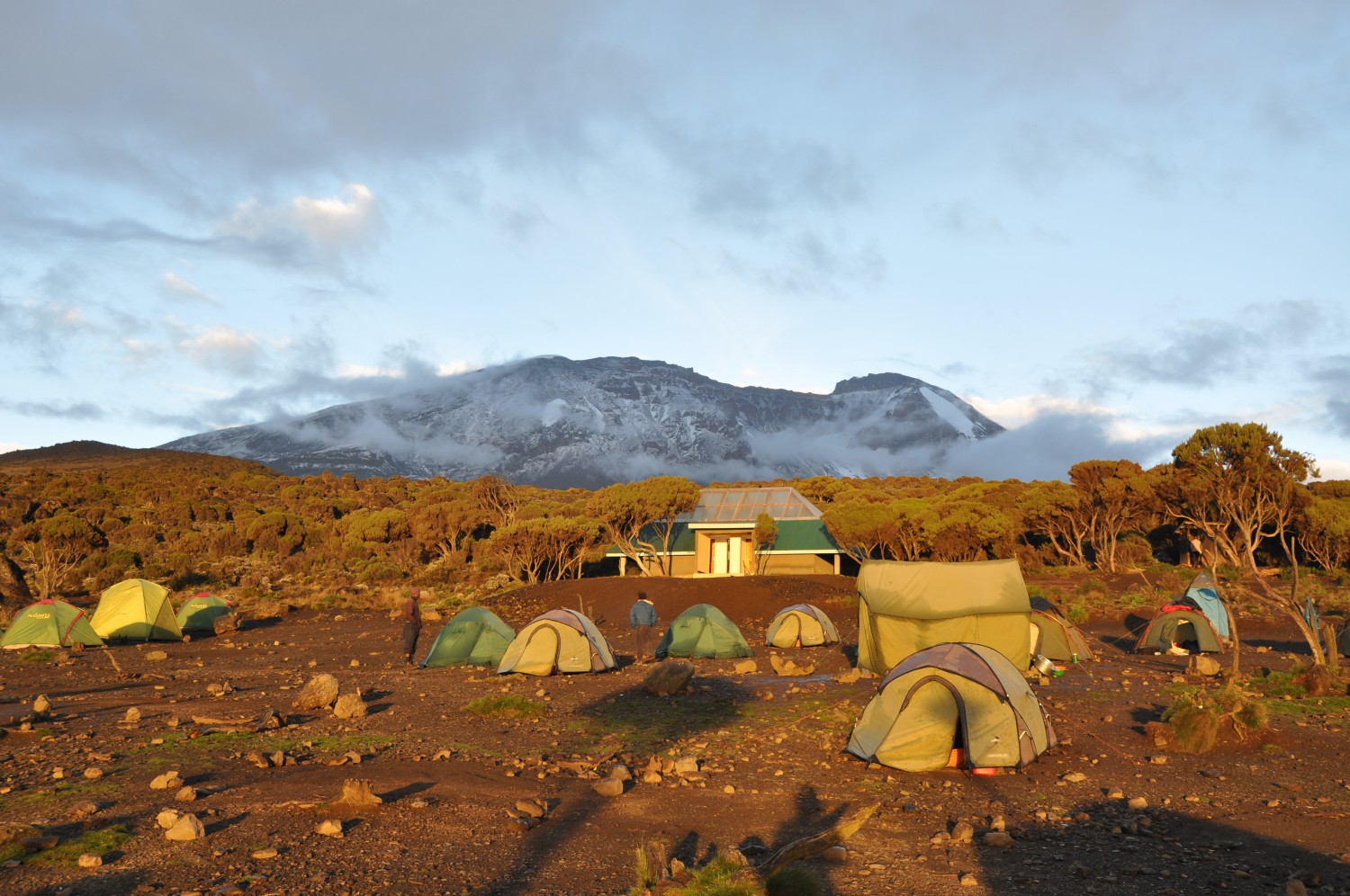
The porters are allowed to carry up to 20 kg according to the regulations of the park. However, it is both hard to believe and very impressive when you see them carrying a backpack on their back, and then more on their heads, while they are wearing run down shoes which we wouldn't wear for such a serious hike.
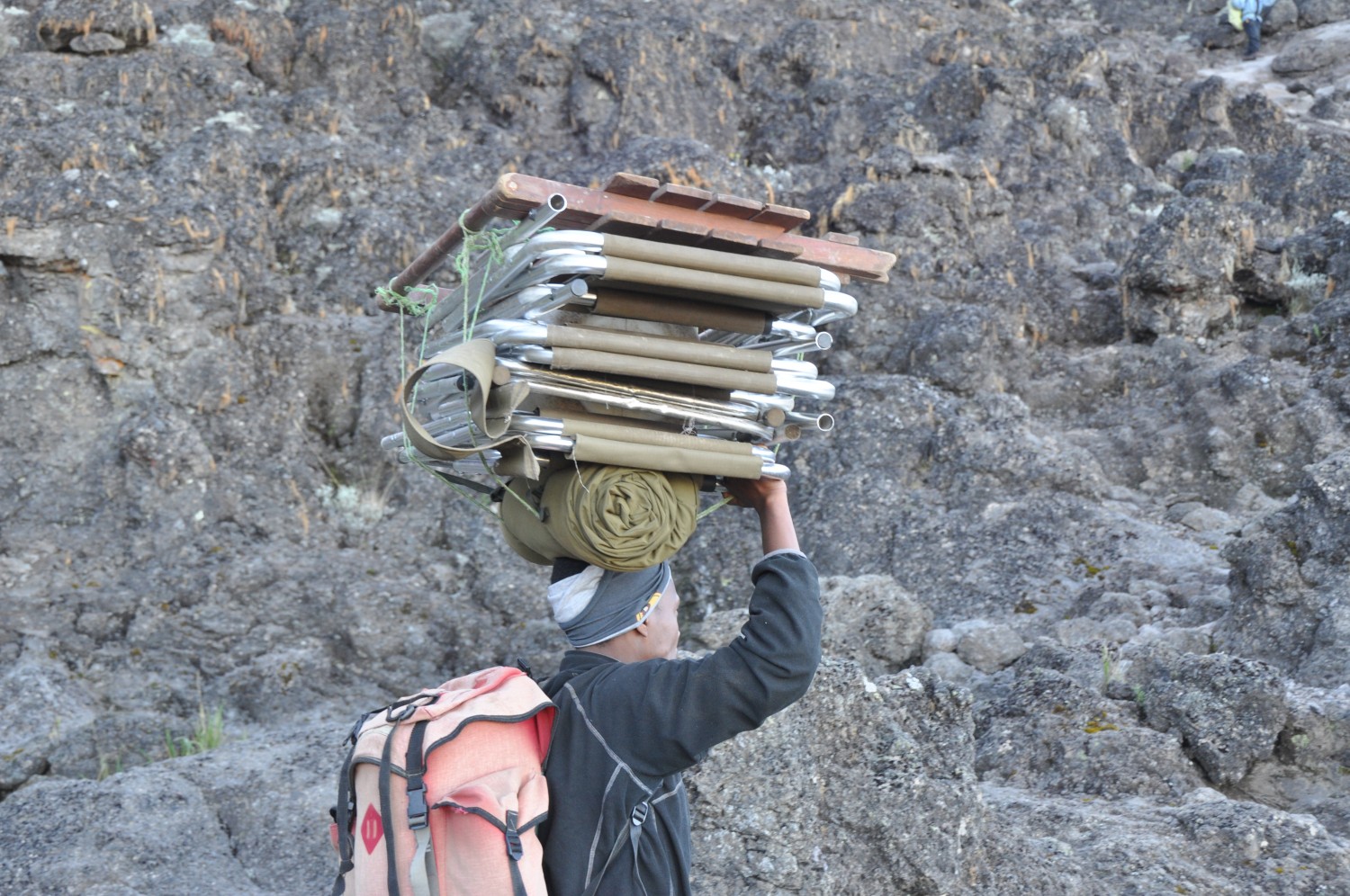
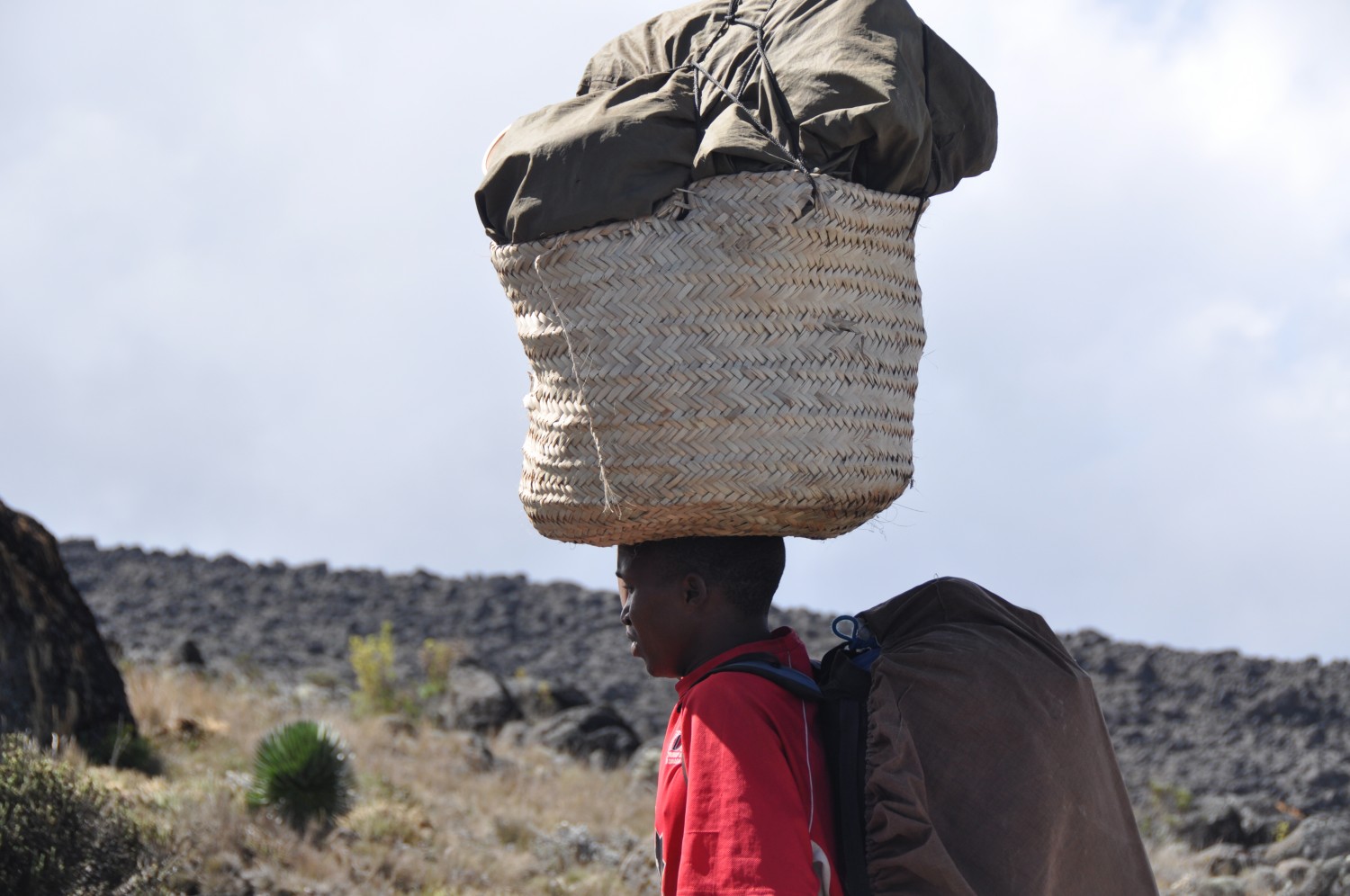
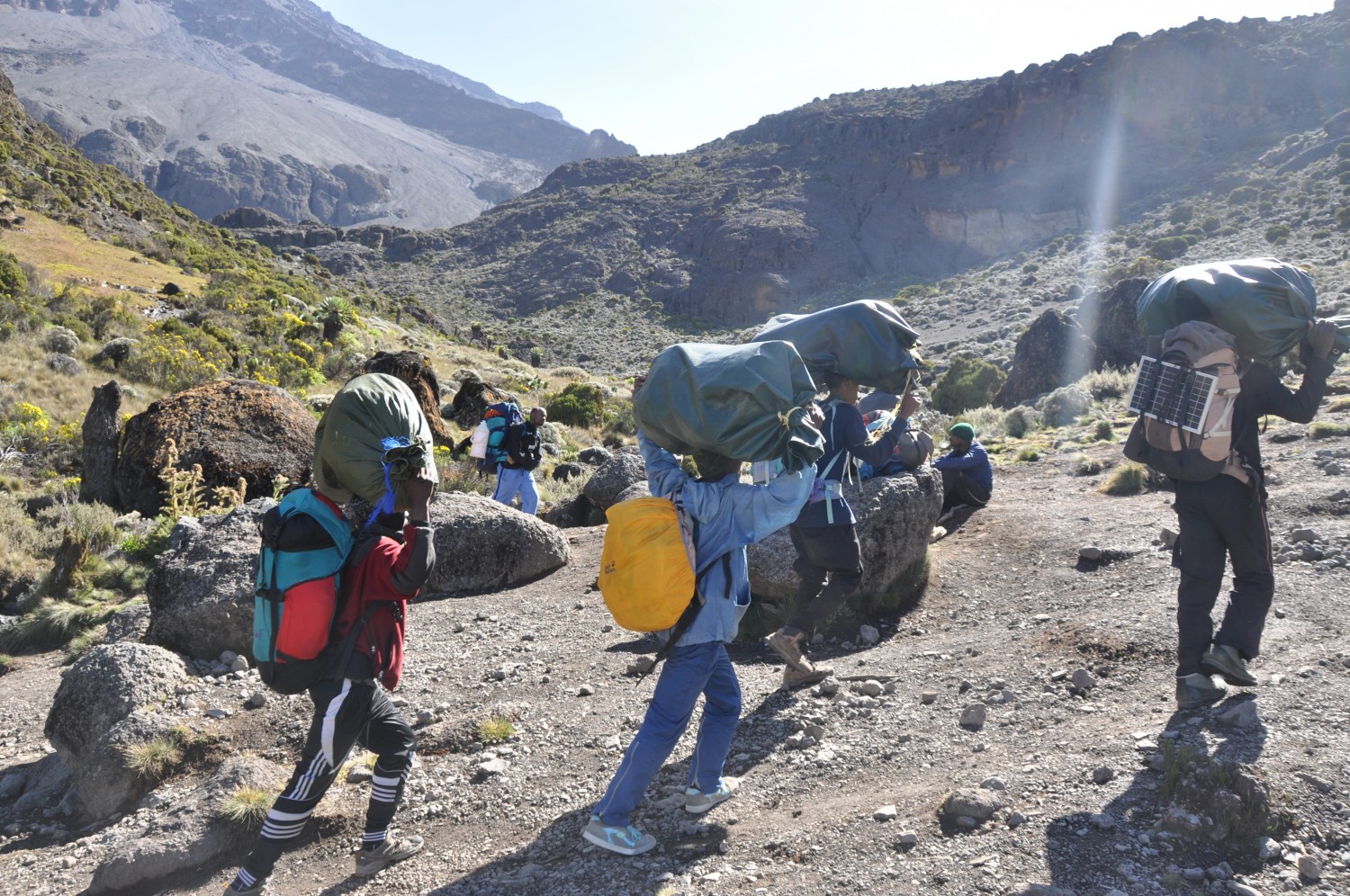
Day 3 (Acclimatisation day): Shira Camp (3900 m) to Lava Tower (4600 m) to Barranco Camp (3940 m)
The third day was the acclimatisation day. During this day we climbed from 3900 m to 4600 m and descended back down to 3940 m. At the highest point, the effects of the altitude could appear: headache, shortness of breath, vomiting and a fast heartbeat. But if these symptoms are not there, or if they only appear in a small amount, the chance of getting severe altitude sickness when going even higher are small.
Both Victor and I didn't feel anything, so we wouldn't have to worry too much about altitude sickness when attempting to summit! Now it was a matter of being fit enough!
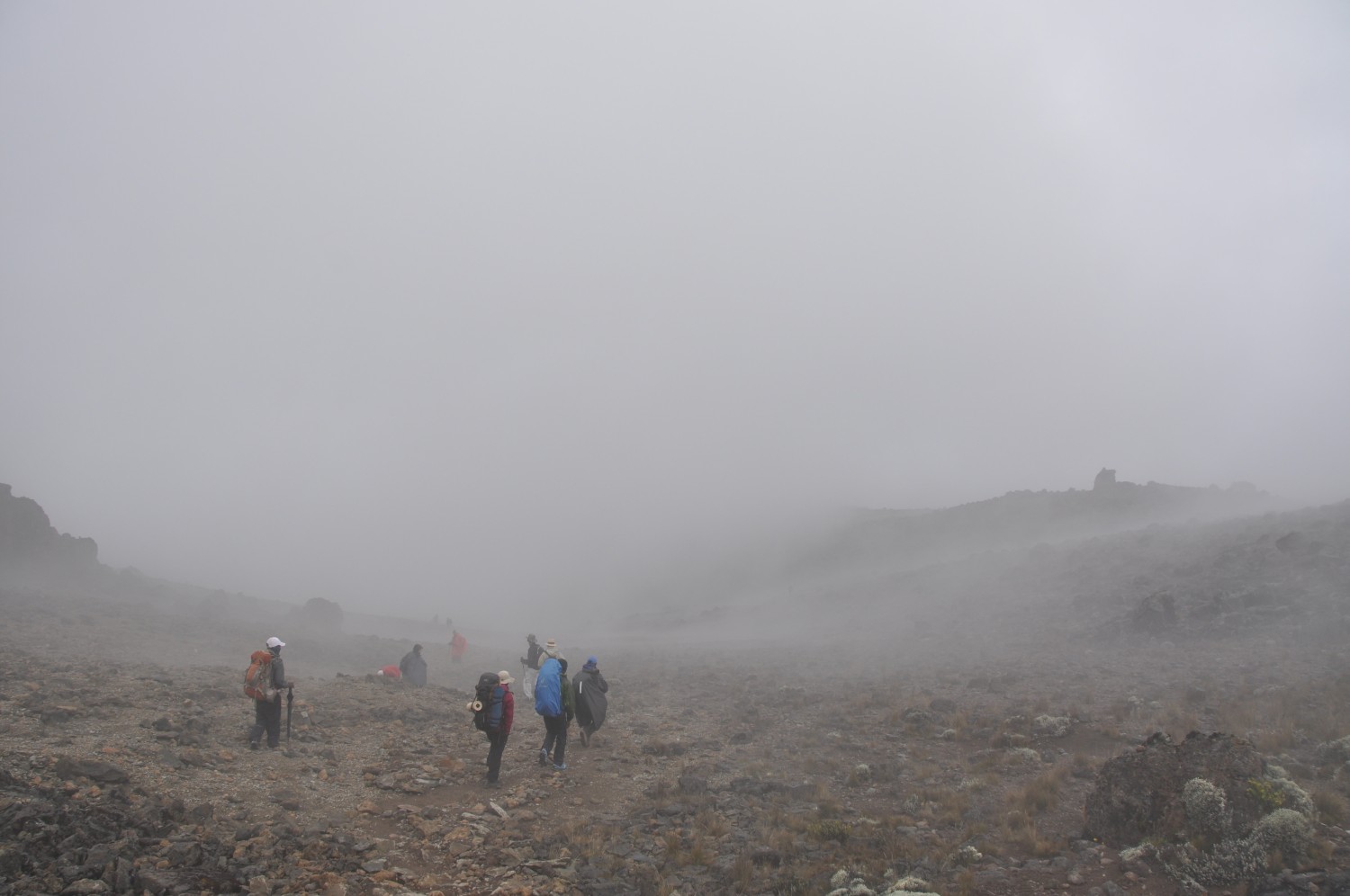
One of the many lobelia flowers we saw on the way:
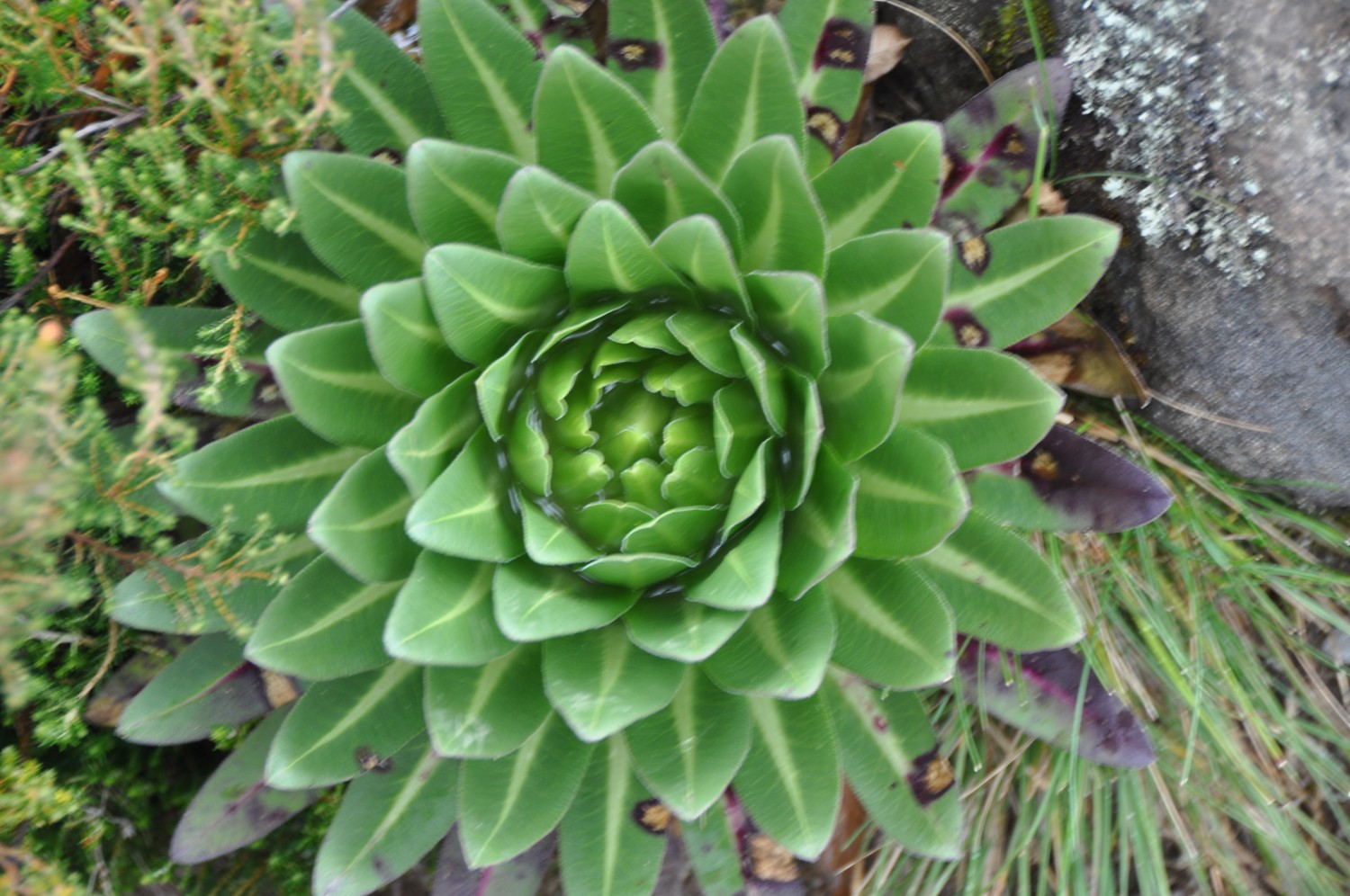
Dendrosenecio trees (Dendrosenecio kilimanjari):
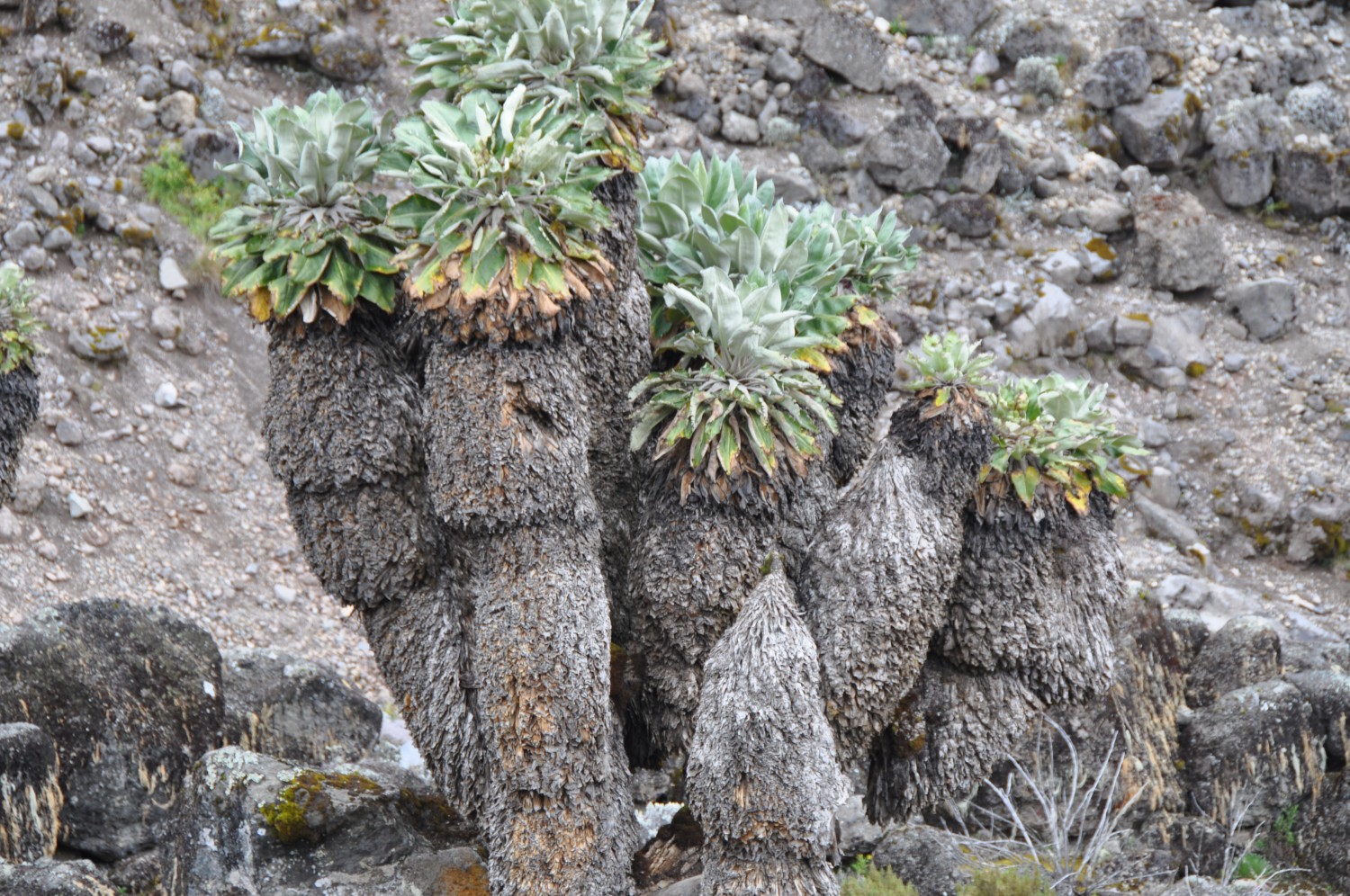
Sign at the Barranco Camp at an altitude of 3940 meter:
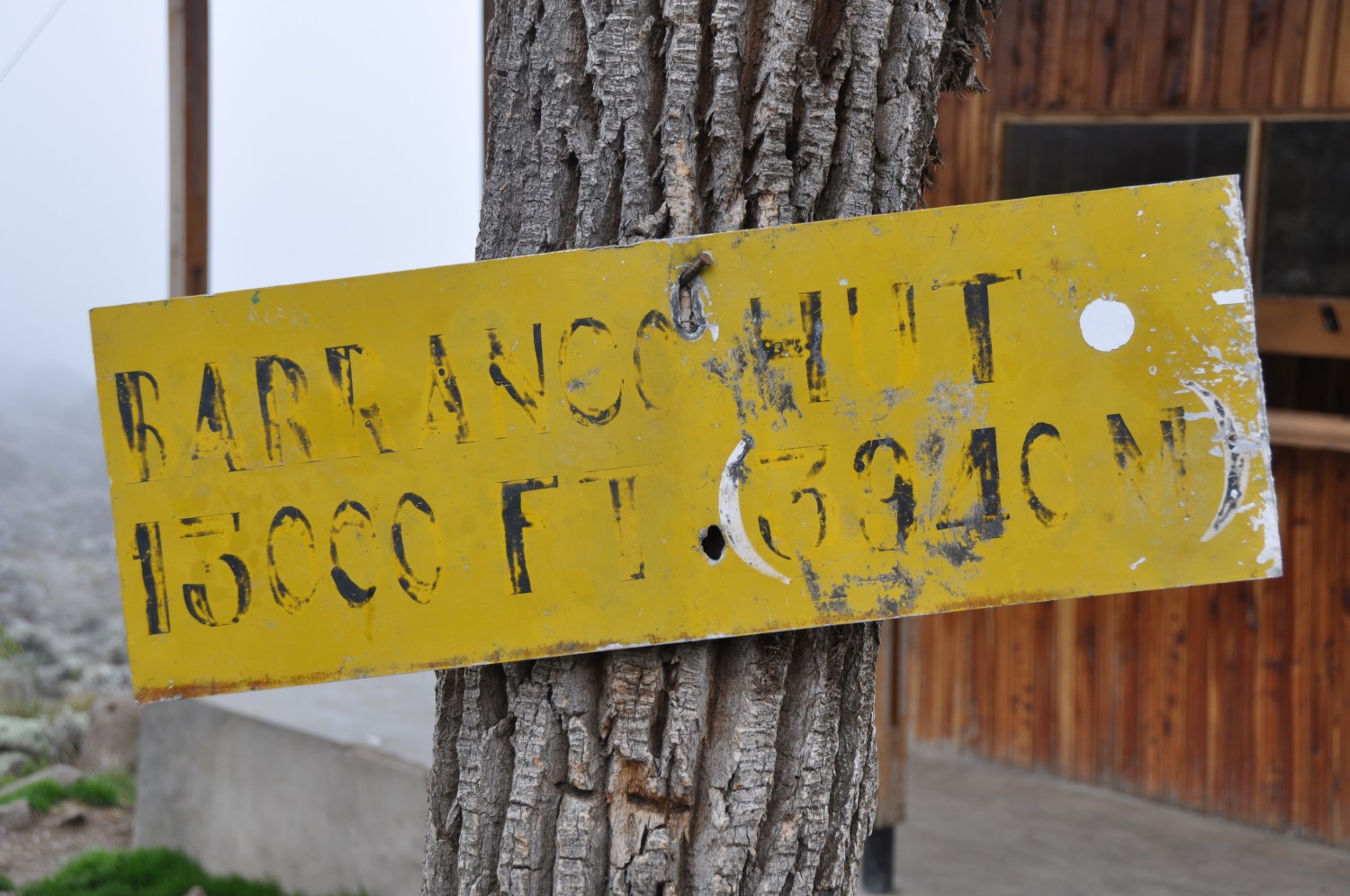
Another view of the Kibo Peak. We were getting closer!
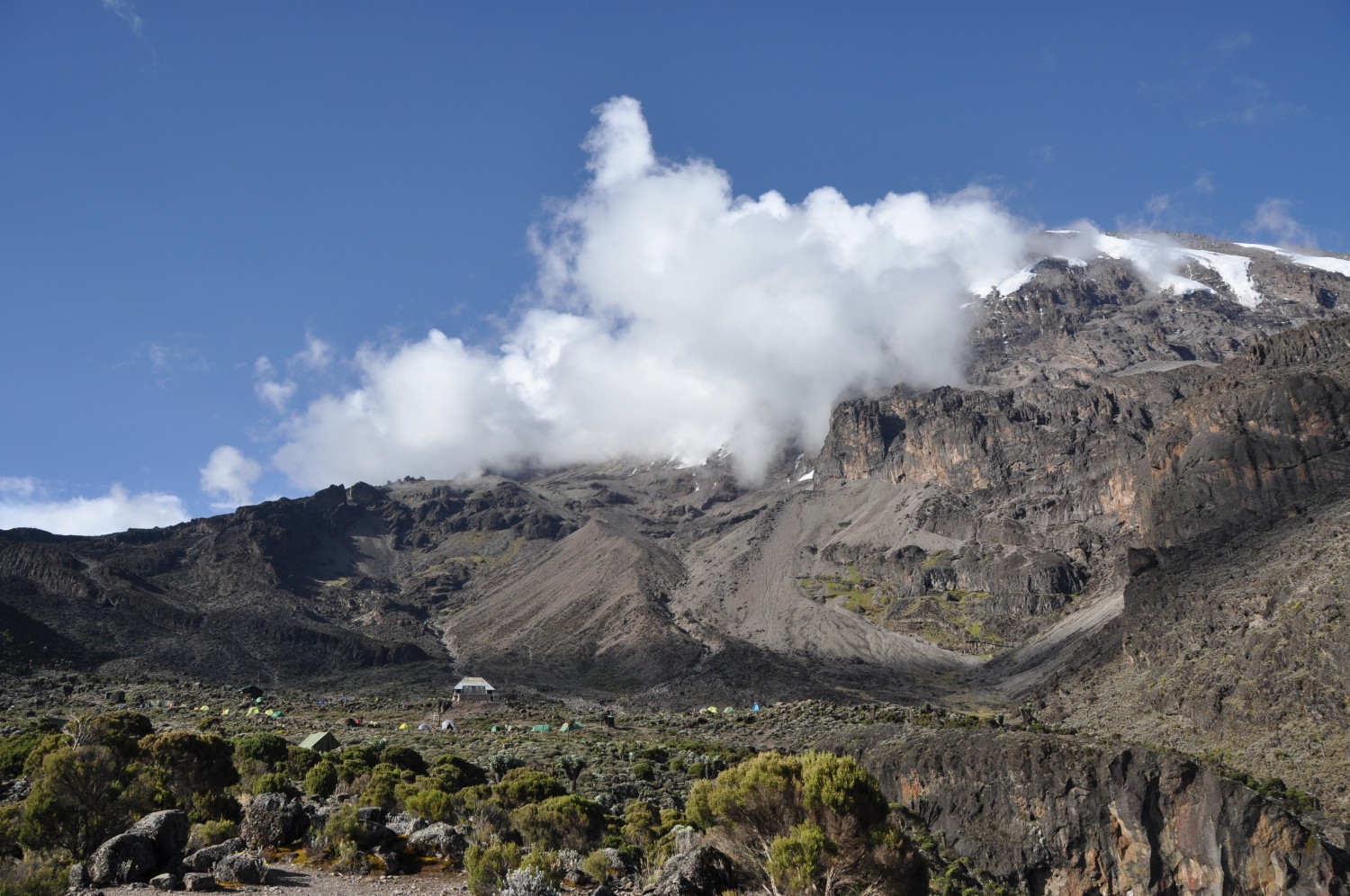
Day 4: Barranco Camp (3940 m) to Barafu Camp (base camp; 4650 m)
At Barranco Camp, four of the hiking routes meet. So during high season, it could host up to a thousand people! This could lead to a two hour traffic jam of hikers and porters on the Barranco Wall, a 250 meter climb, almost straight up, just outside of the camp.
But since there were a lot less than a thousand people now, we could quickly climb up the wall and were on the top after about 30 minutes. We were eager to continue and didn't want to lose a lot of time, so we quickly hiked further to Karanga Camp. This is an intermediate camp, used by people who wanted an extra night's rest before going to base camp. We had only booked a six day hike so after a little break at the camp we continued to base camp: Barafu Camp!
During this day's hike the guide tested our pace and they were very surprised to arrive at base camp at noon. It had apparently been a few years since they had arrived this early. This boosted our self-esteem of course, but mostly gave us more time to rest before the summit day!
A view of the base camp from below:
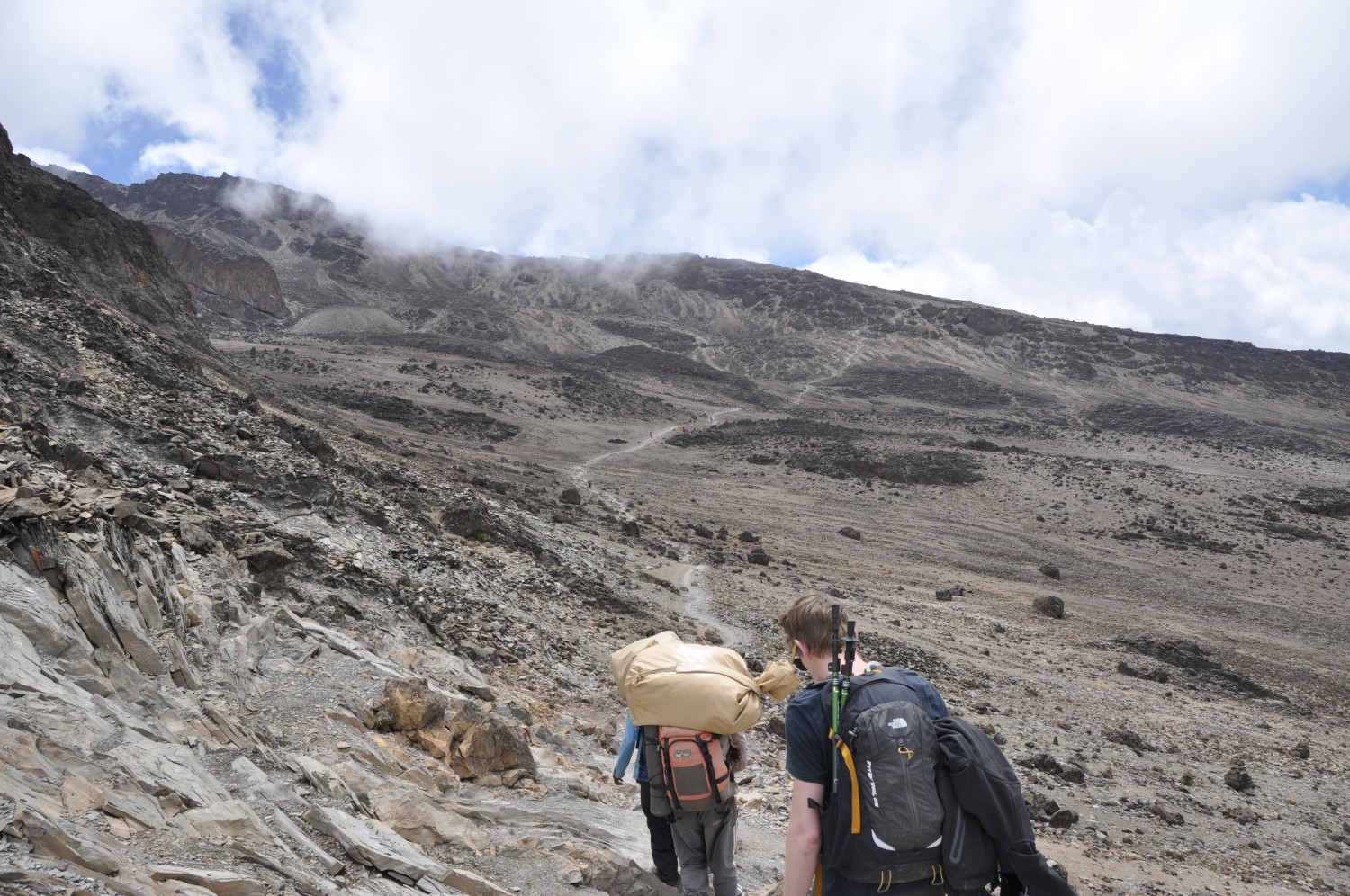
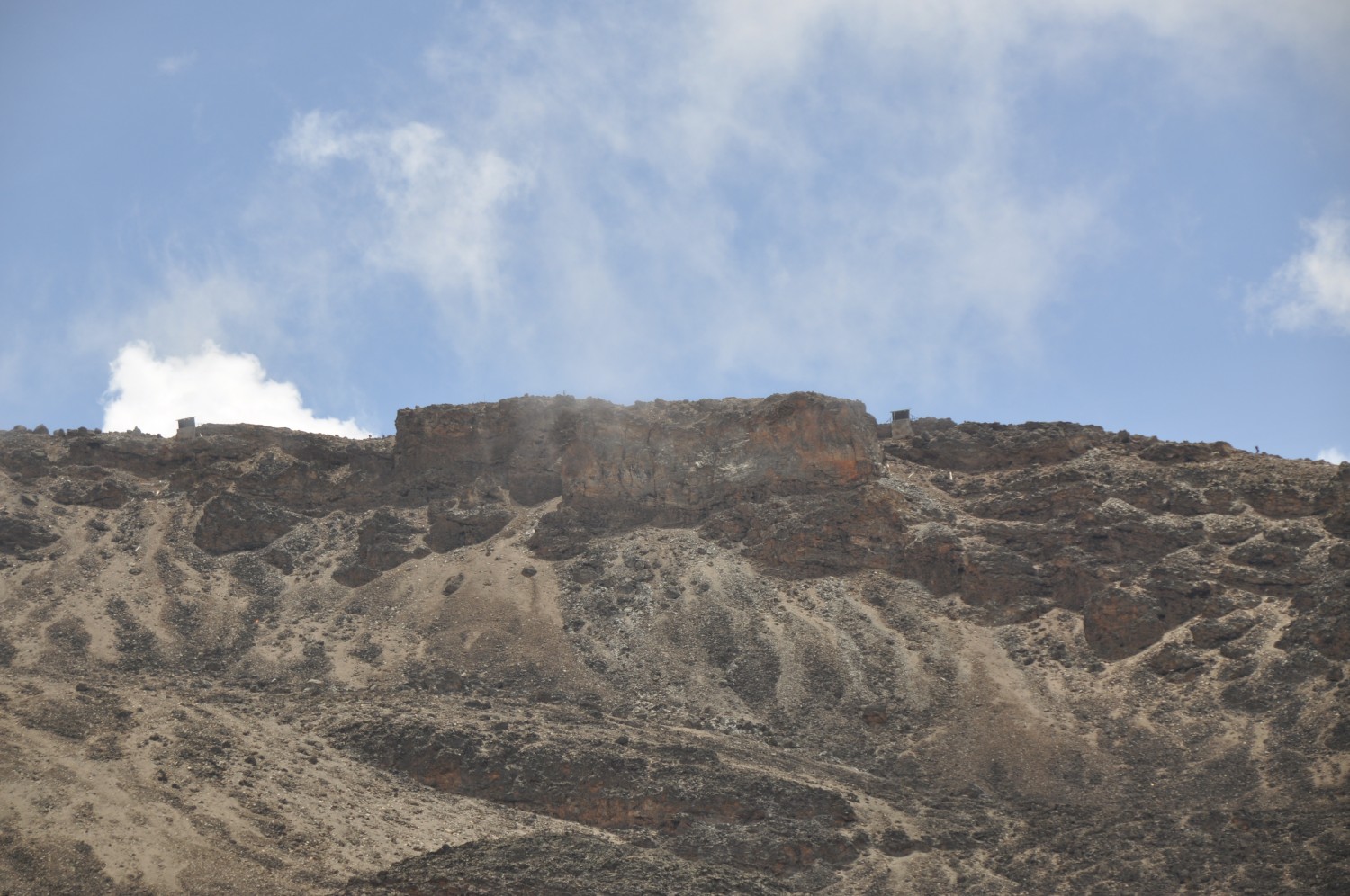
The toilets (hole's in the ground) at base camp:
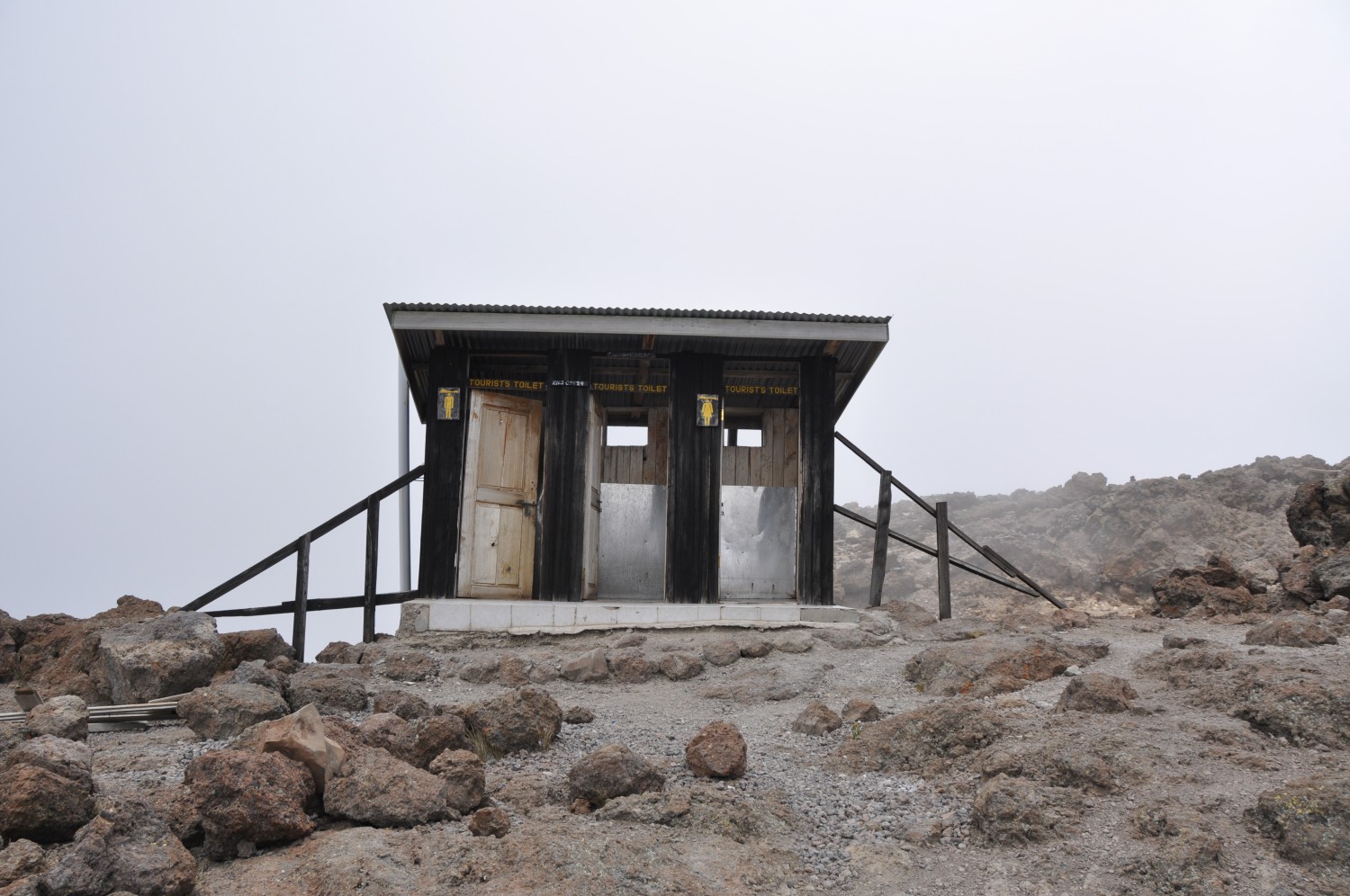
Our tents and other hikers' tents at base camp:
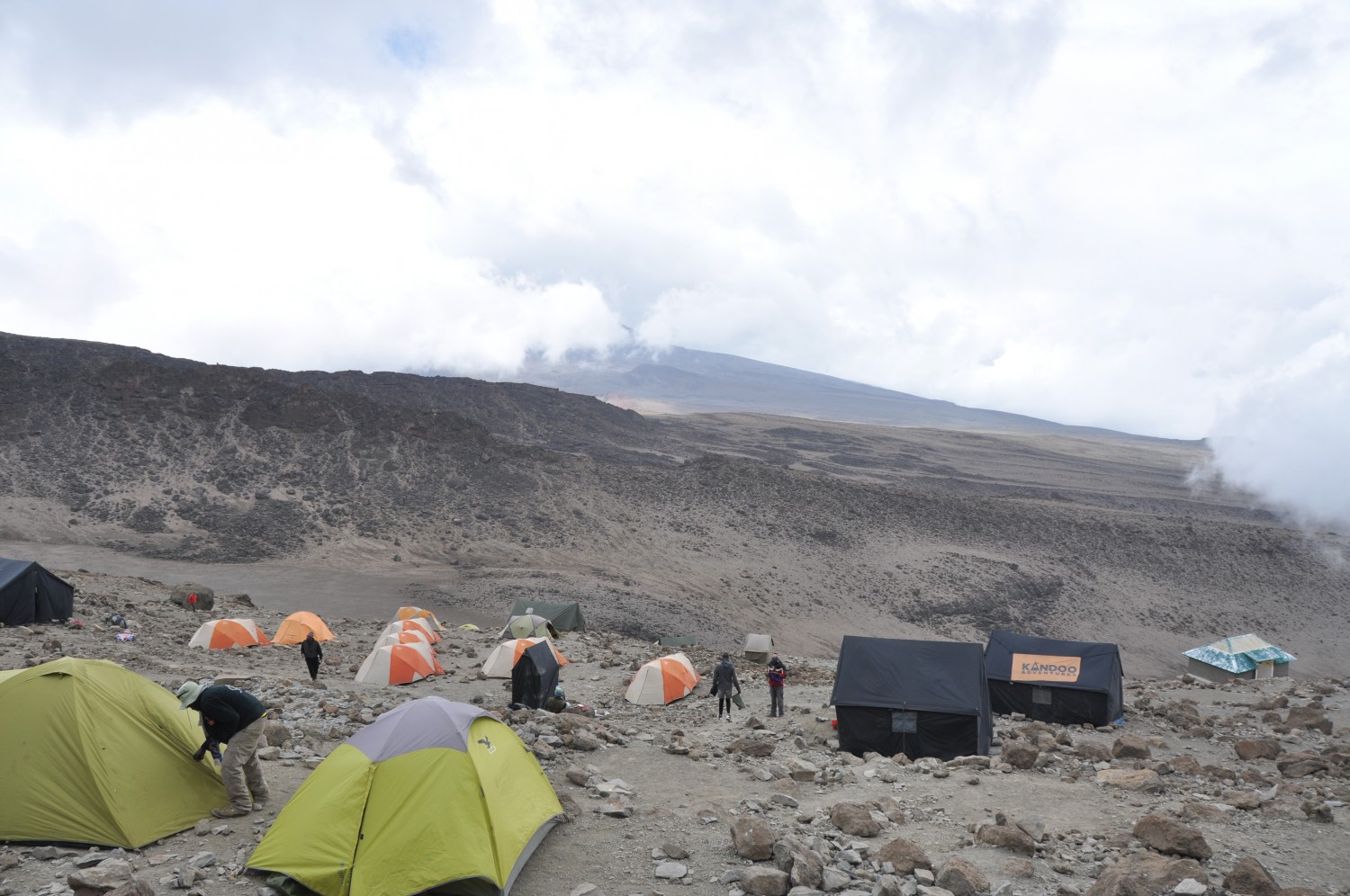
Base camp lies at 4650 meter, still 1245 meter short of the summit! To reach the summit for sunrise, it meant getting up in the middle of the night, literally. Wake-up time was at midnight. So we had our dinner at 5 pm and tried to get to sleep at 6 pm.
Day 5 (Summit day): Barafu Camp (4650 m) to Uhuru Peak (5895 m) to Mweka Camp (3100 m)
Because we proved during the previous day that we had a good pace, we were allowed to sleep a bit longer than other groups. We heard groups were getting up at 10 or 11 pm. By the time we were ready to go up, the others groups had already gone, which we could see on the way up by the numerous head torches.
A long exposure shot of the people going up and Kibo.
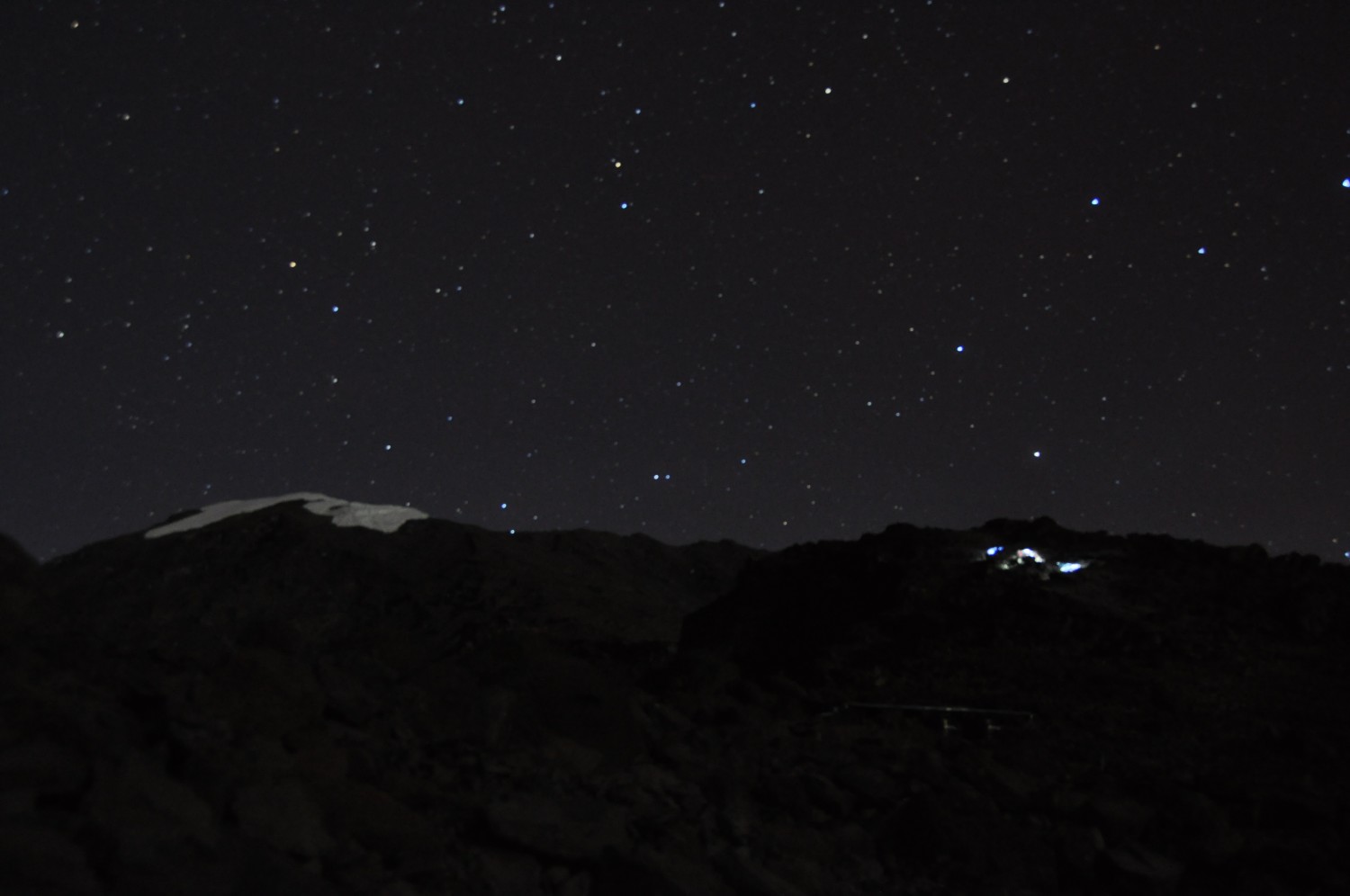
The acclimatisation day had shown we handled the altitude well. However, we were going higher than we had ever been. So there was even less oxygen every step we took. Combined with a lack of sleep, this resulted in a very exhausting way up! We had received warnings the night before: we would get headaches, we could have difficulties breathing and there's a possibility of vomiting (up to three times was allowed!). Fortunately, we only suffered from a slight headache!
But slowly slowly ('pole pole' in Kiswahili), we made it to Stella Point, the point-of-no-return, at 5756 m at 5 am. From this point on the ascent is less steep and thus easier than the first few hours of the trek. We had our last break there, accompanied by some warm tea with a lot of sugar to energize us for the last 140 m up.
At 6 am, Just before sunrise we then finally made it to Uhuru Peak. Together with another woman, we were the first to arrive! What an incredible feeling!! We practically had the whole peak to ourselves and could see the sun rising in the east from the highest point of Africa! Unbelievable!!
We had climbed for five days, starting at 1600 m in the blistering sun with a temperature of more than 30°C, arriving at sunrise at 5895 m with a temperature between -10°C and -5°C, surrounded by glaciers and snow.
And I did all of that with my brother. Really incredible!
My brother and me at the Uhuru Peak!
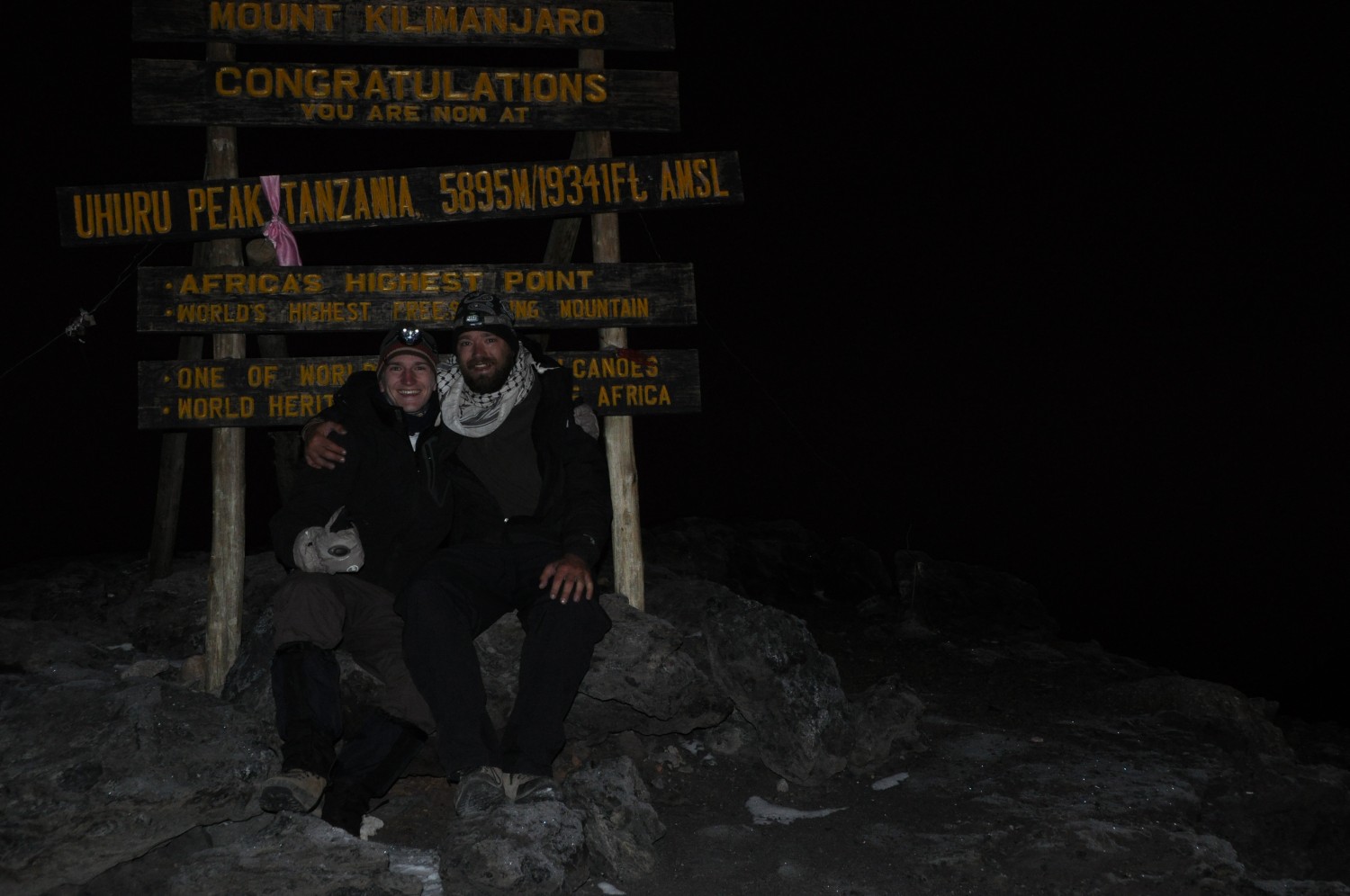
Dismas, Victor, me and Faraja (our two guides):
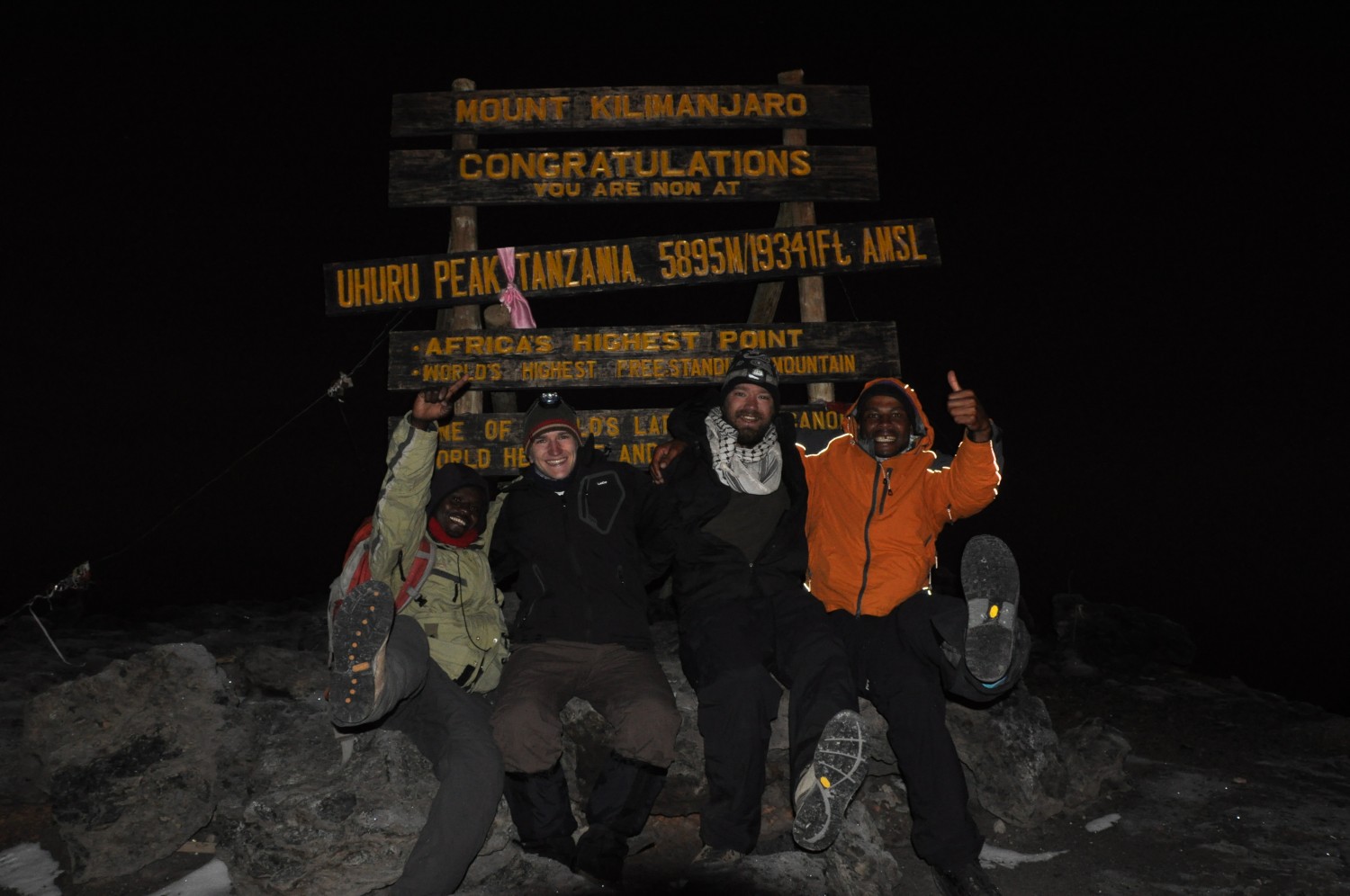
We then waited on the summit until the sun rose above the clouds so we could have a better view of what was happening under our feet...
...and to take another picture at the sign:

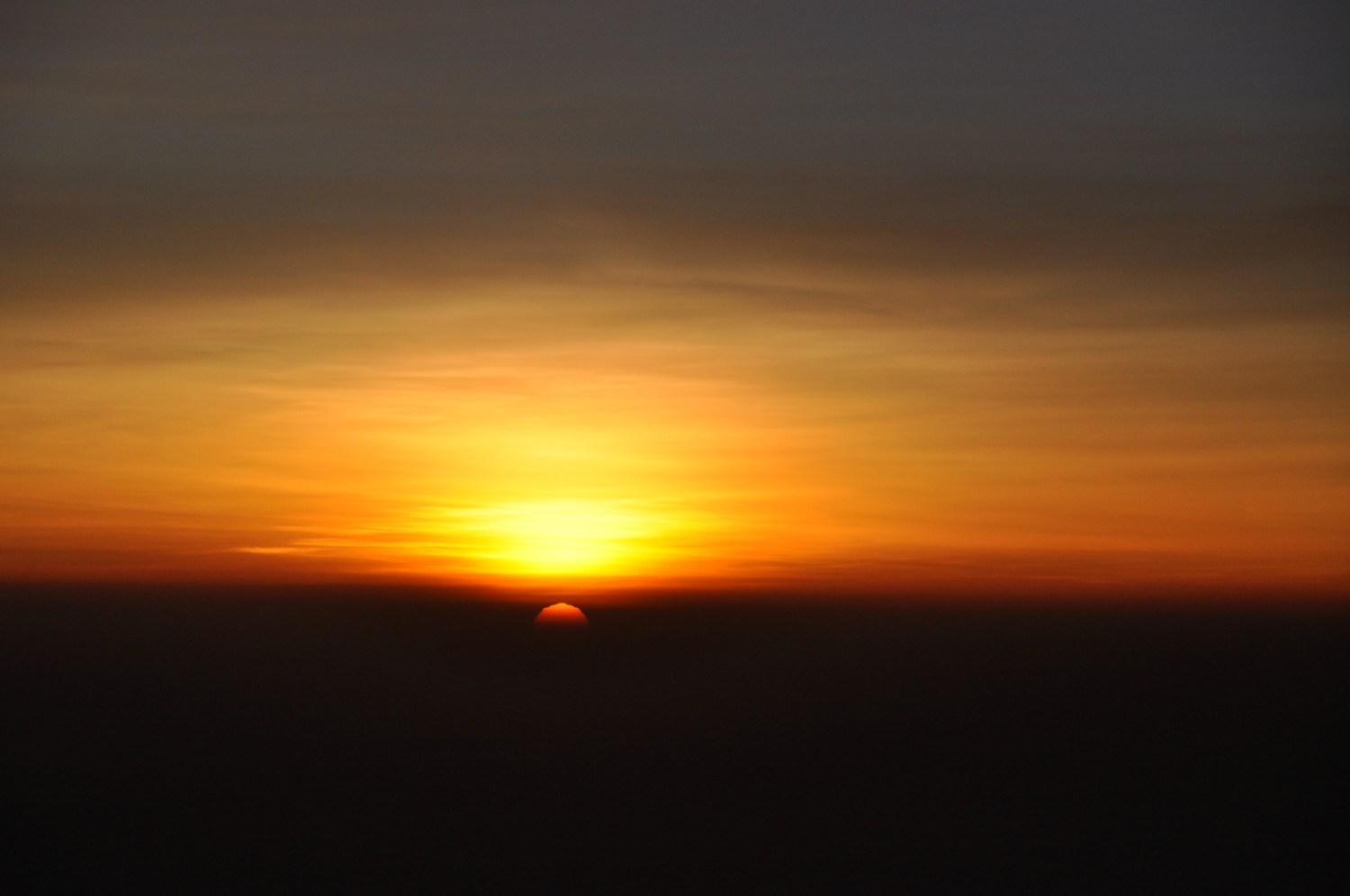
A huge wall of snow and ice, as seen from the summit:
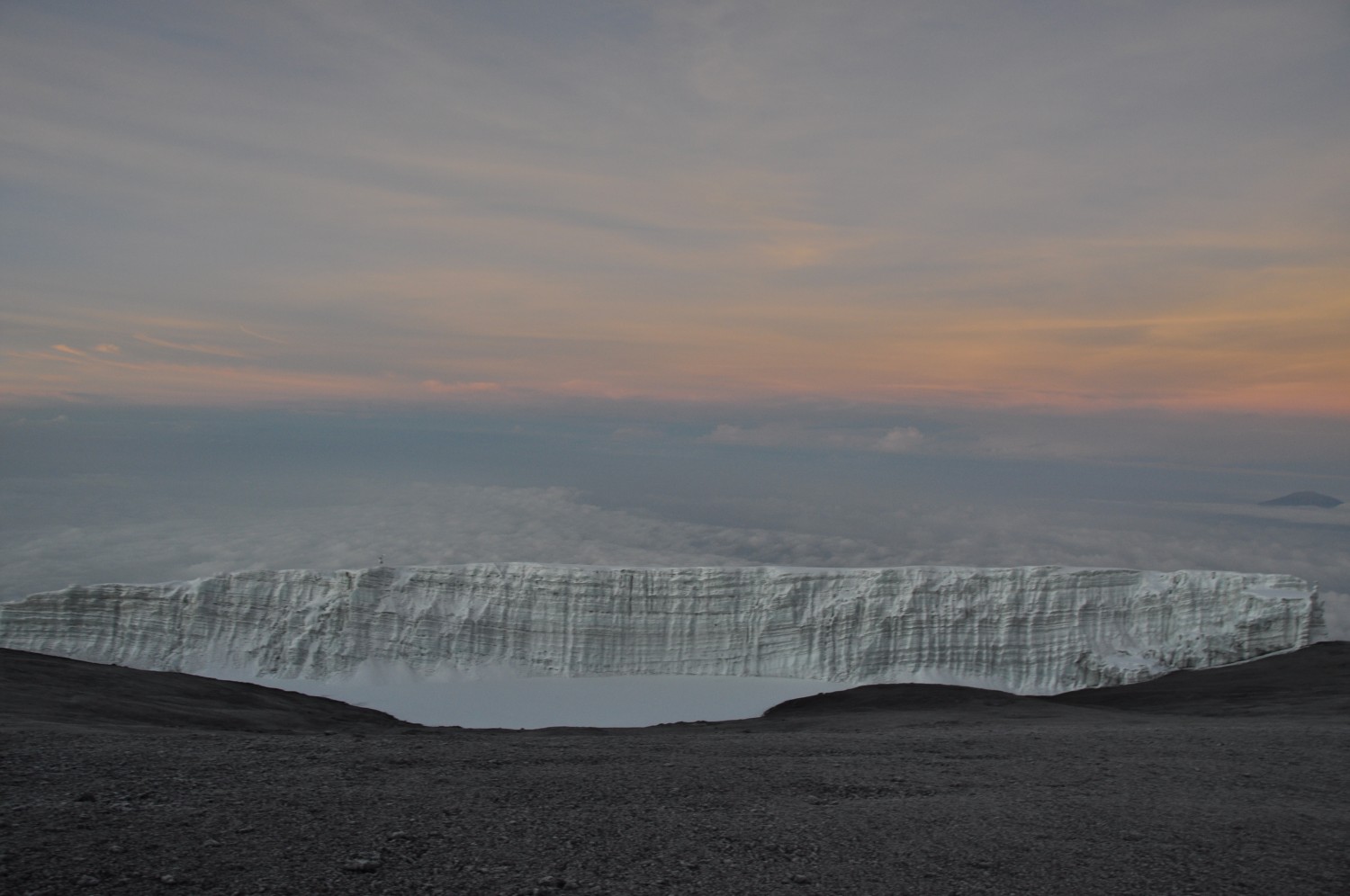
A view on the Mawenzi volcano (5149 m):
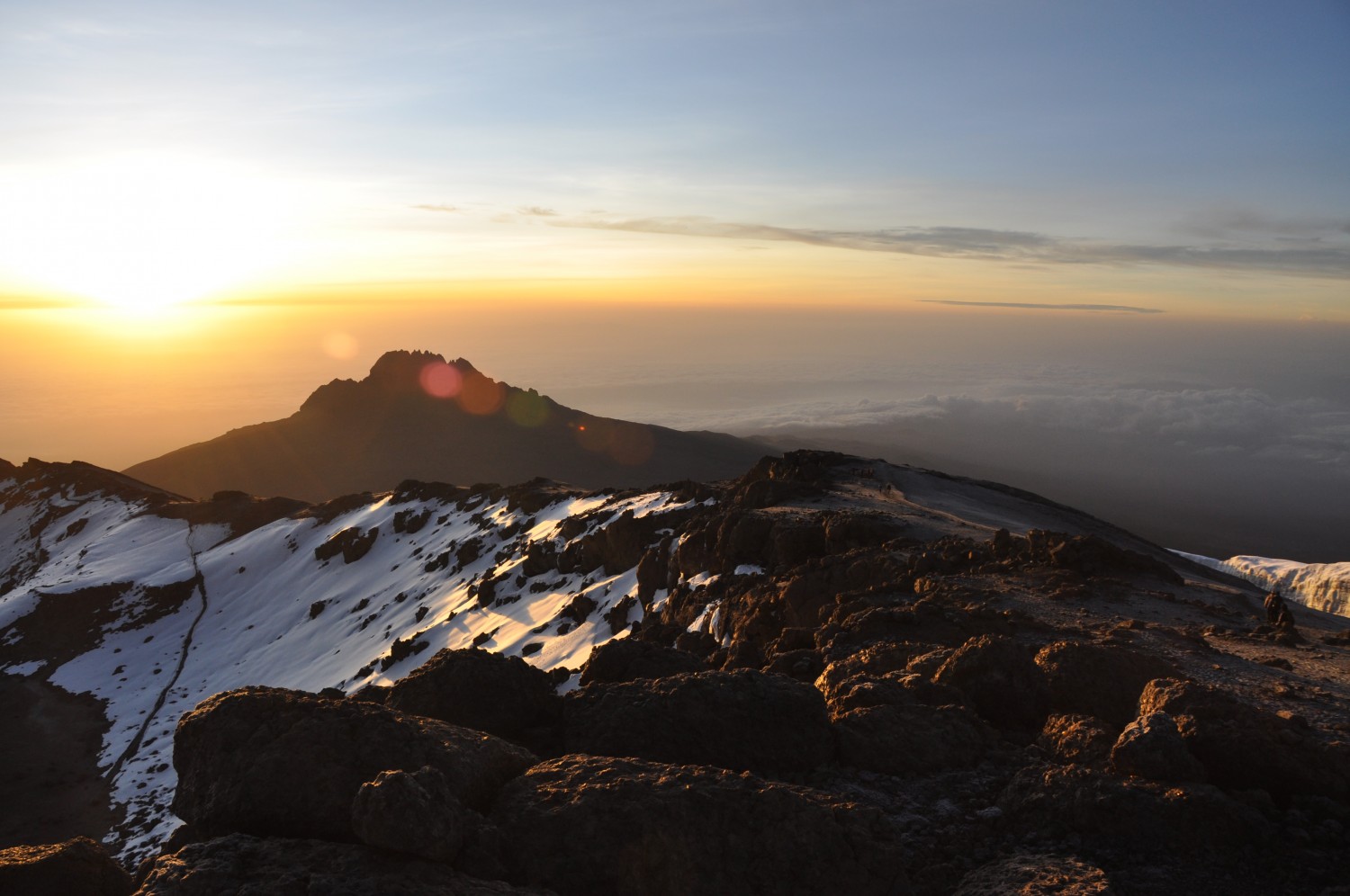
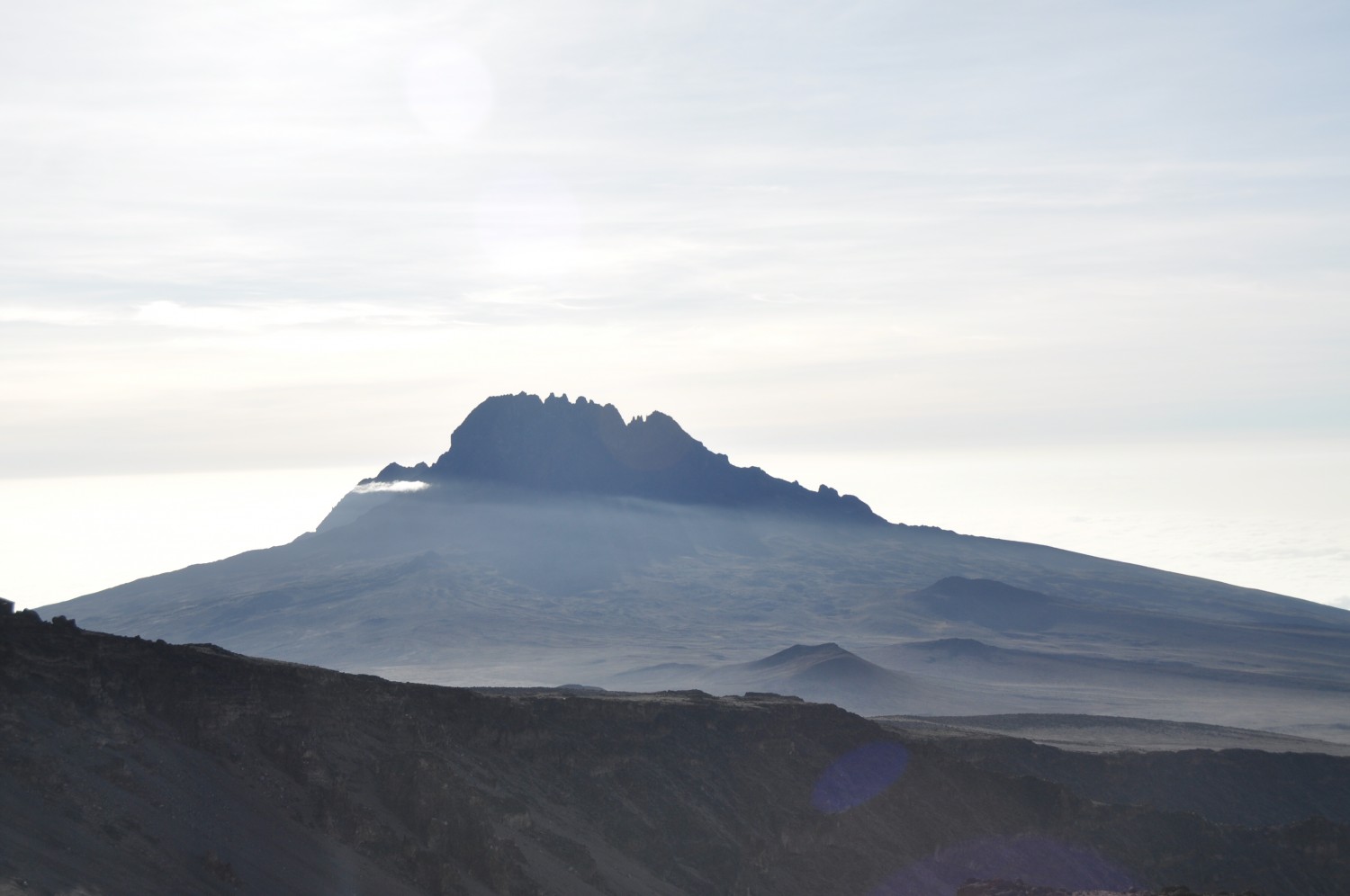
The shadow cast by Mount Kilimanjaro on the clouds and haze surrounding it:
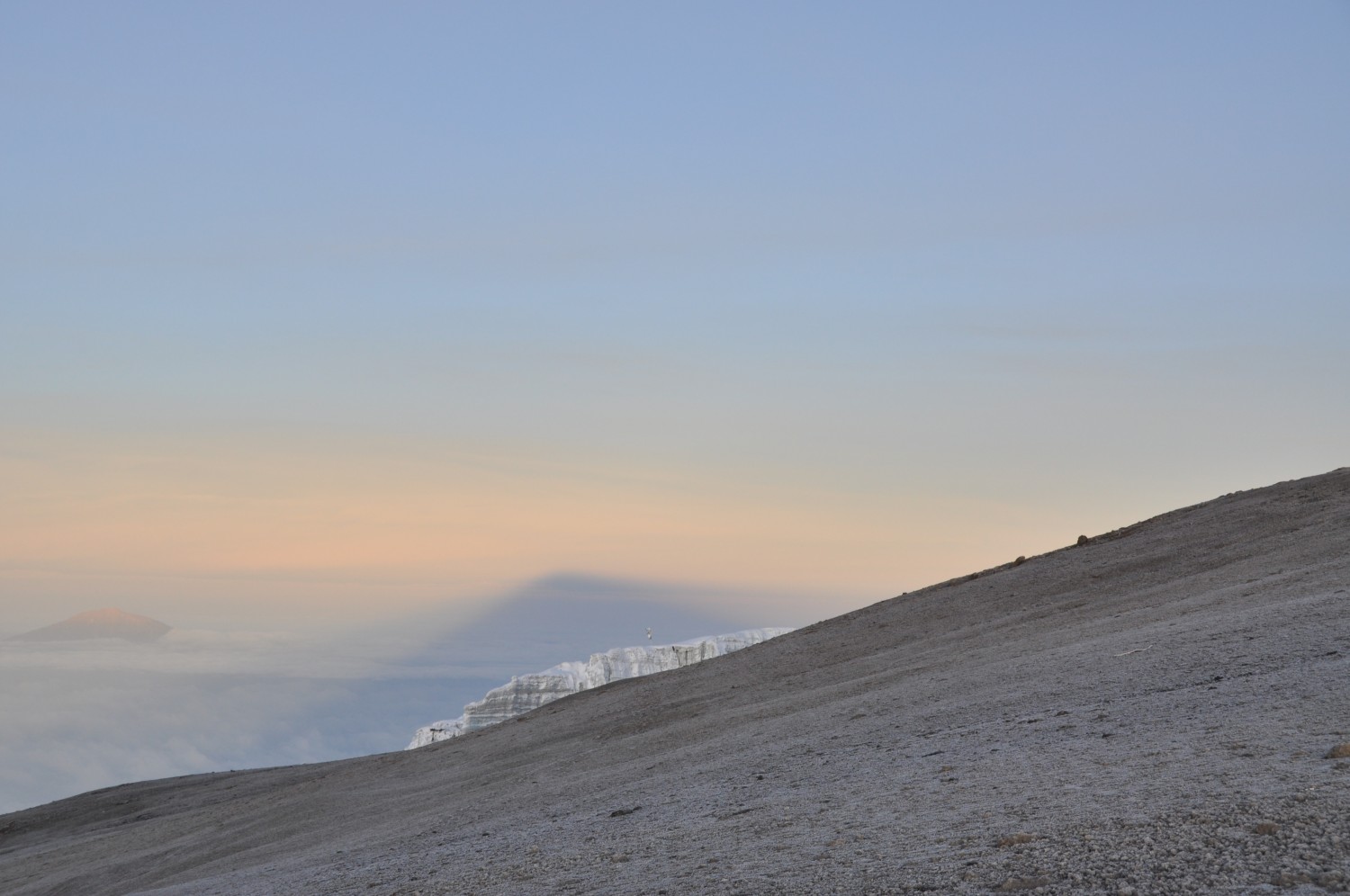
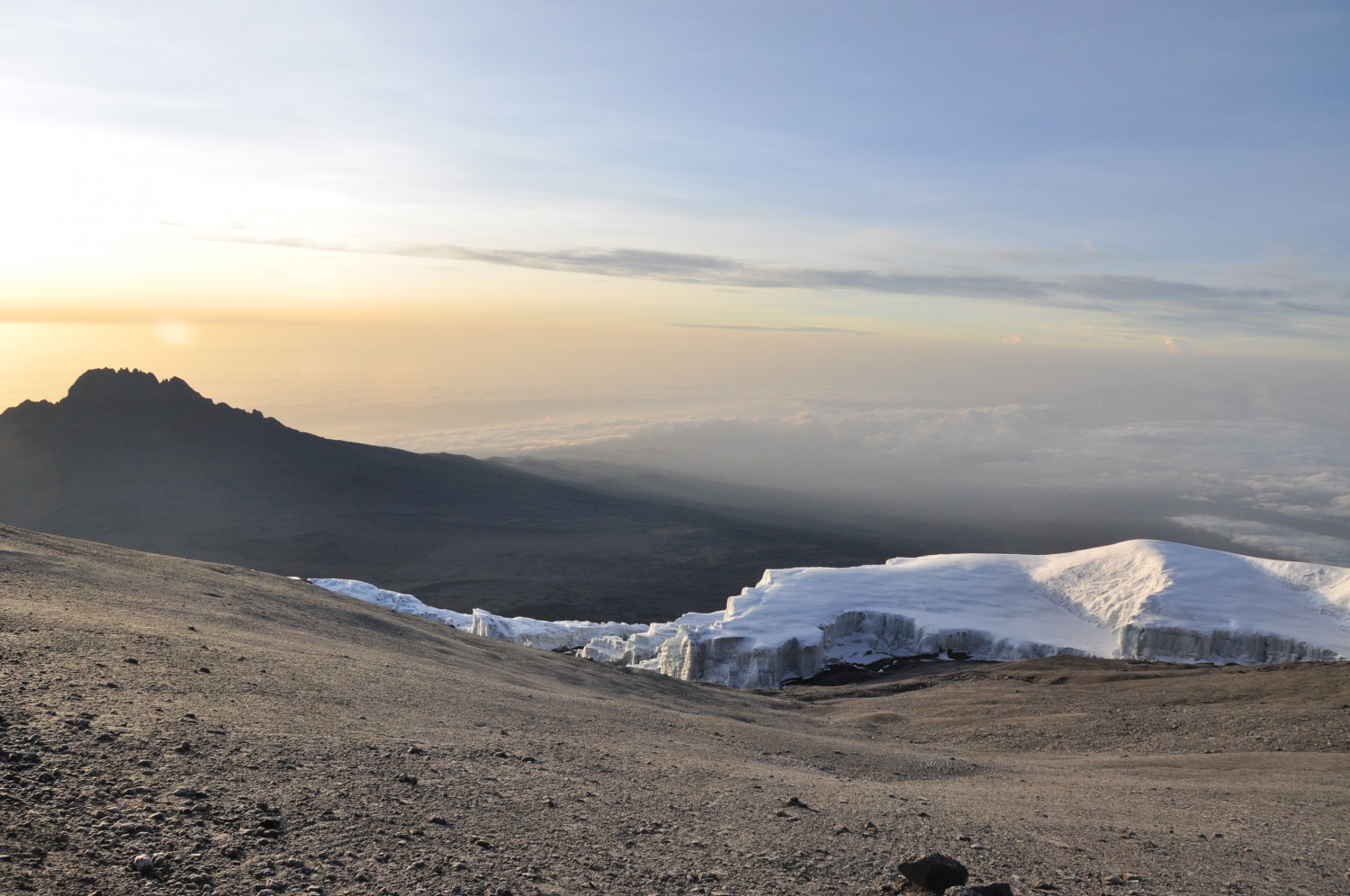
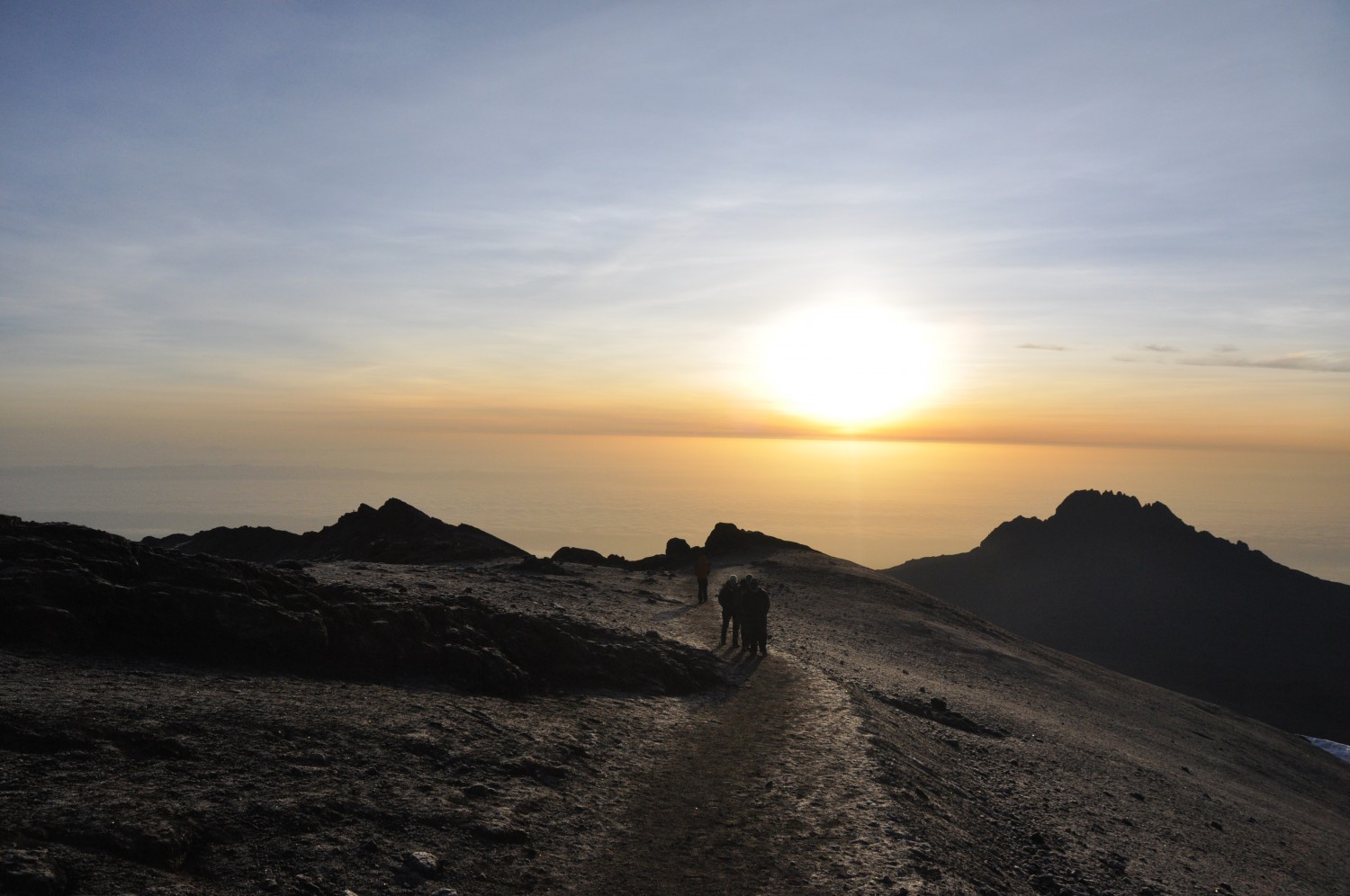
And then, inescapably, the way back down started. Even though going down is less exhausting than going up, especially in this case because the increase in oxygen is very welcoming, it is very hard on the knees. And we were going down for 2800 m. So for both of us, the way back down was a bit less enjoyable than going up. Luckily, we got a long rest back at base camp before having our last lunch on the mountain and heading for Mweka Camp at 3100 m.
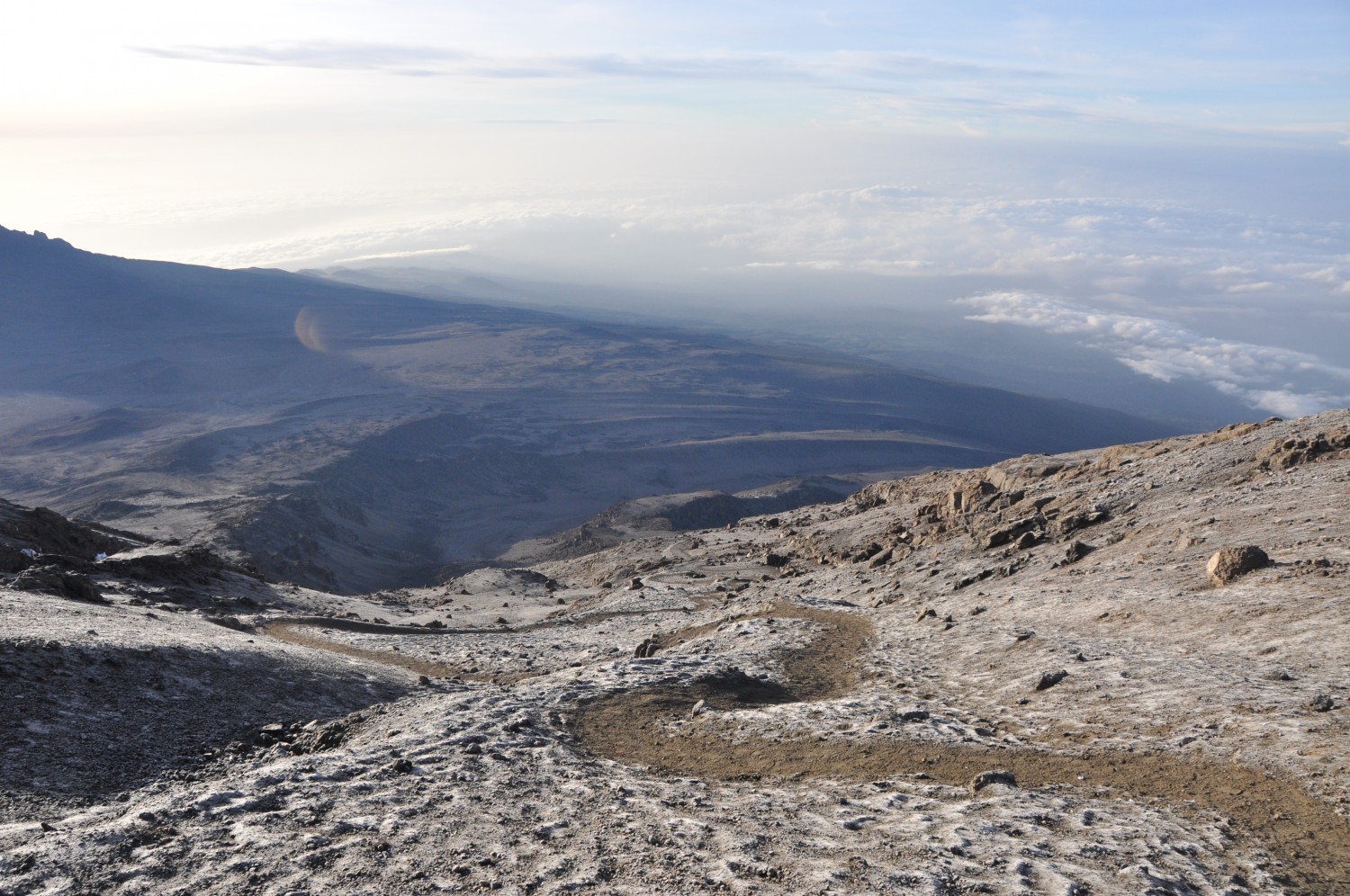
Day 6: Mweka Camp (3100 m) to Mweka Gate (1600 m); then back to Moshi
We had an early and good night's sleep at Mweka Camp after the long and tiring previous day. On the last day we left at 8 am for Mweka Gate, where we got picked up, tired but very satisfied, to go back to our hostel.
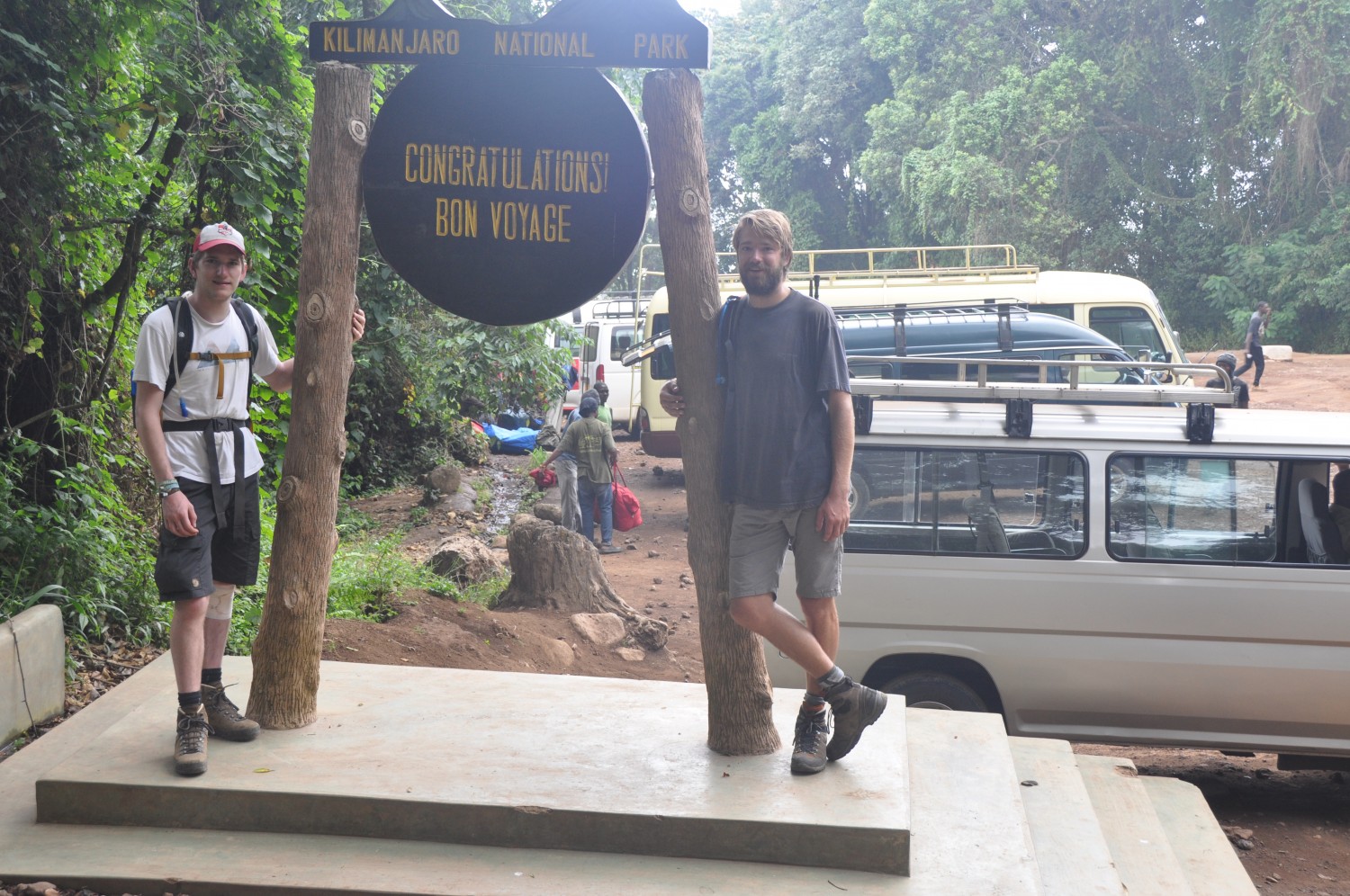
At the hostel a little celebration followed by our guides and team when they joyfully sang the "Jambo Bwana" Kilimanjaro song.
Kilimanjaro? Hakuna matata! (Kilimanjaro? No problem!)
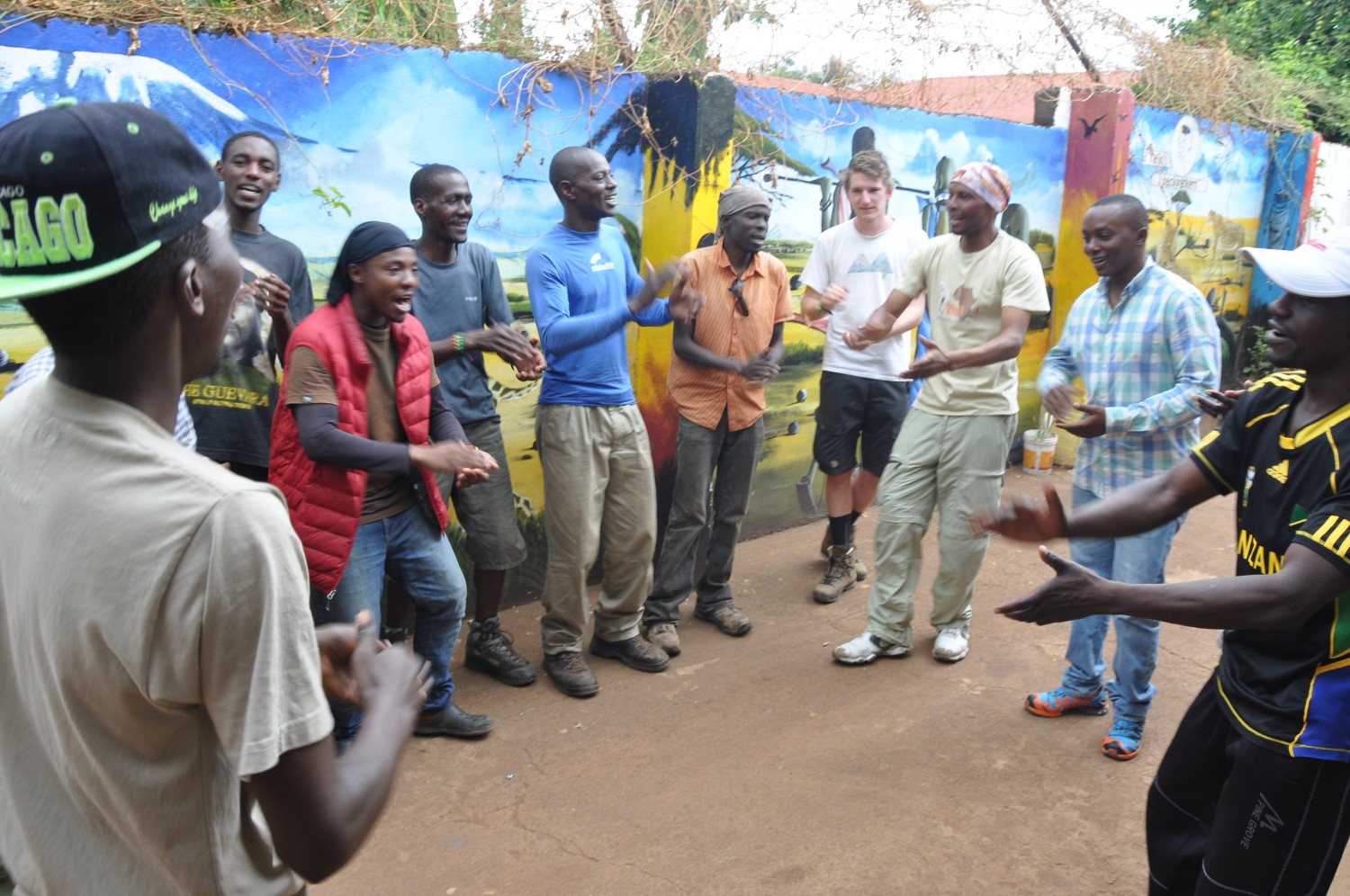
After the singing and dancing, they thanked us, and we of course thanked them, and they handed over our certificates! We officially made it to the summit!
